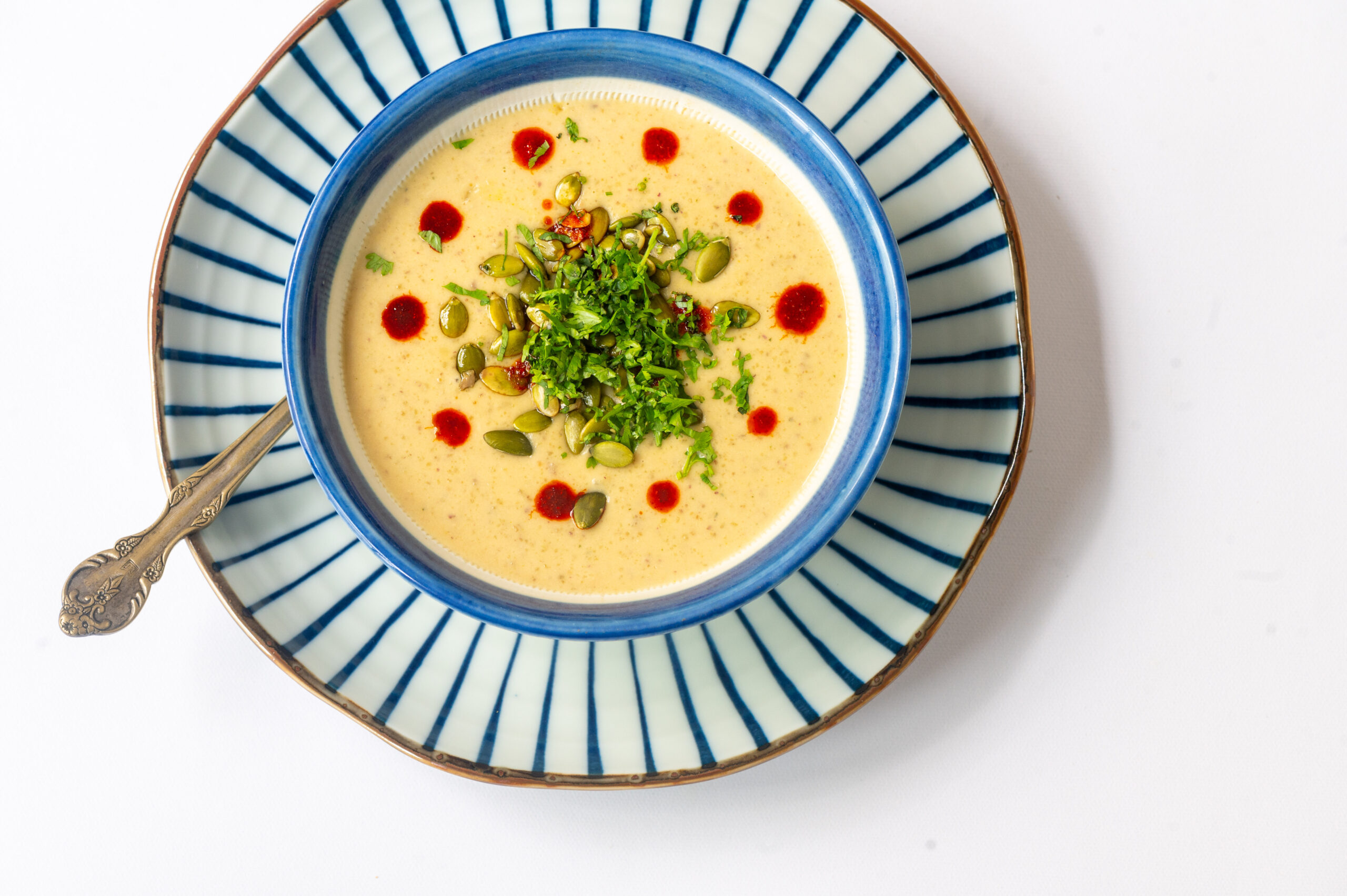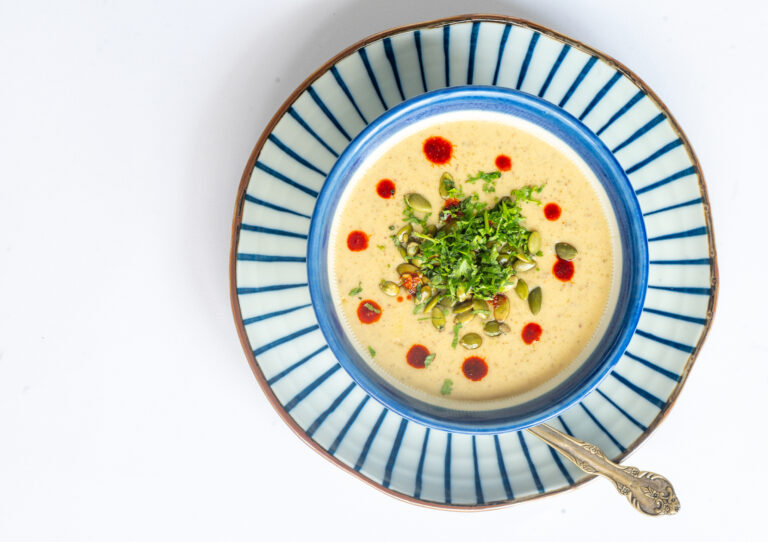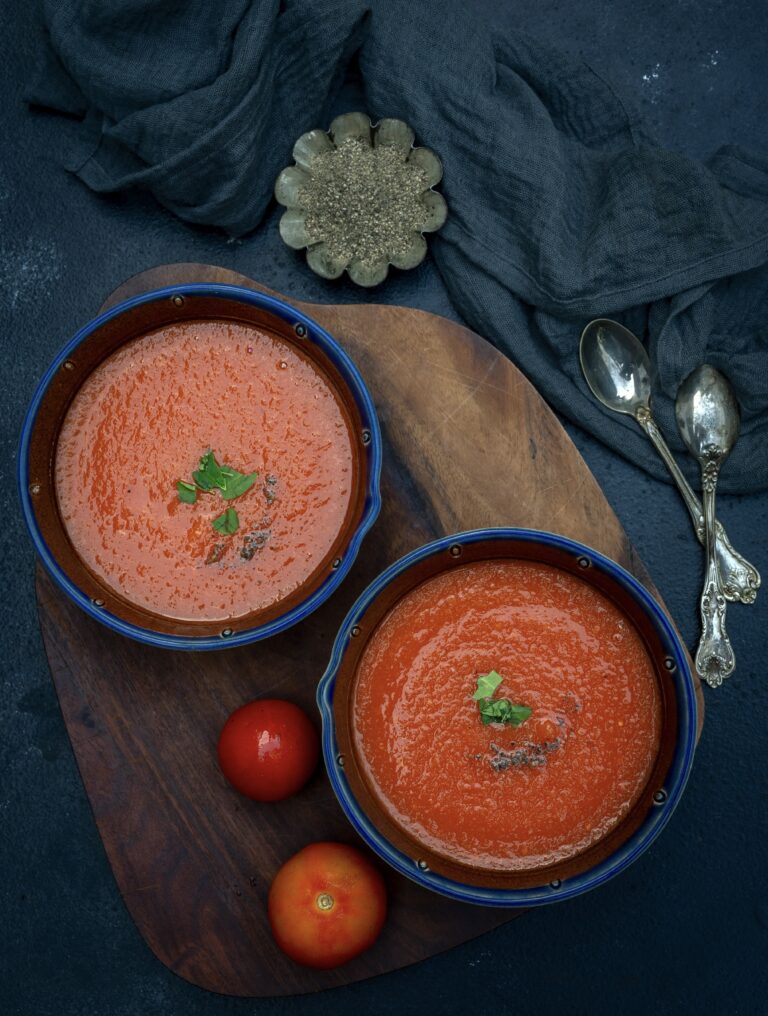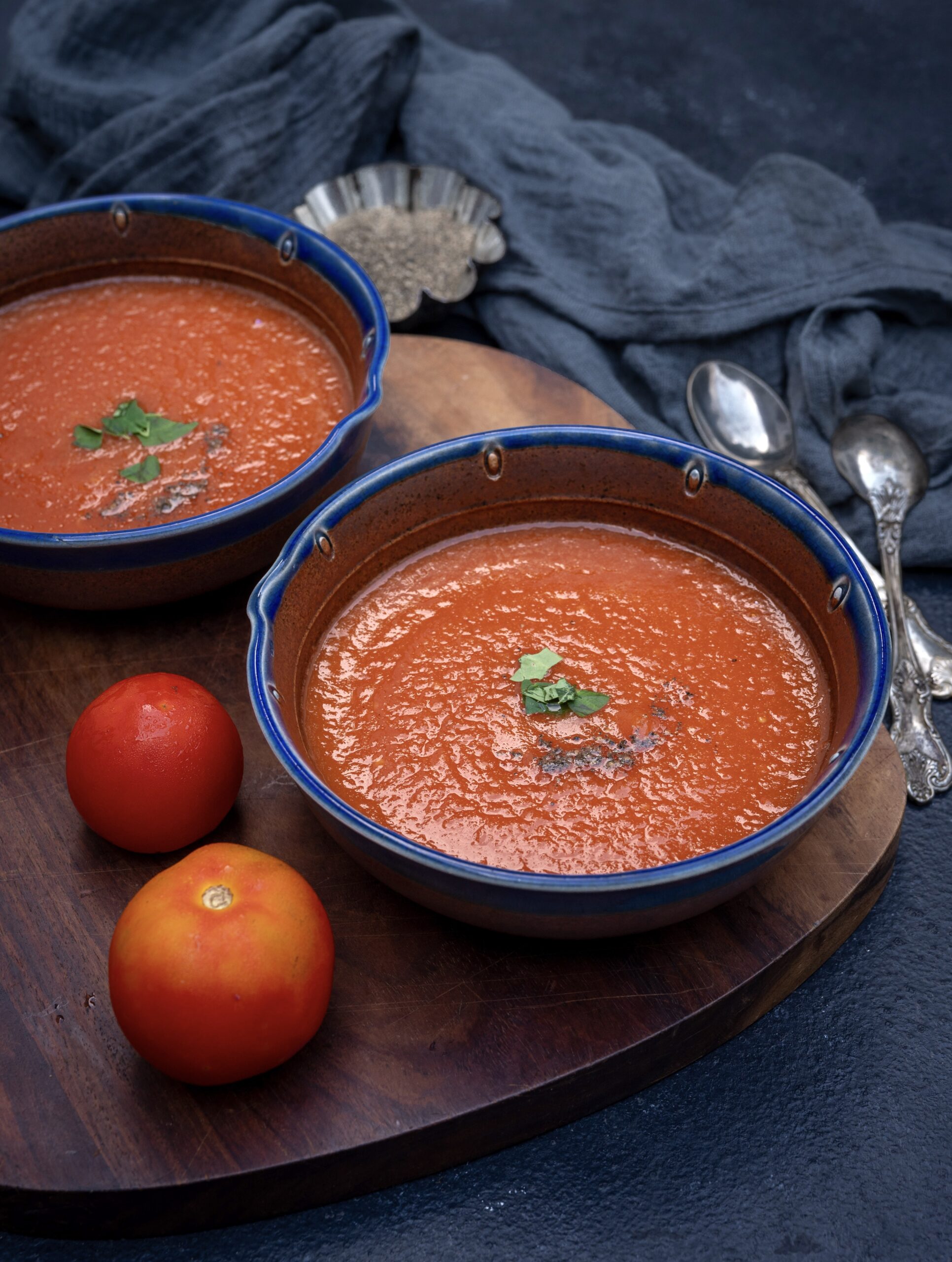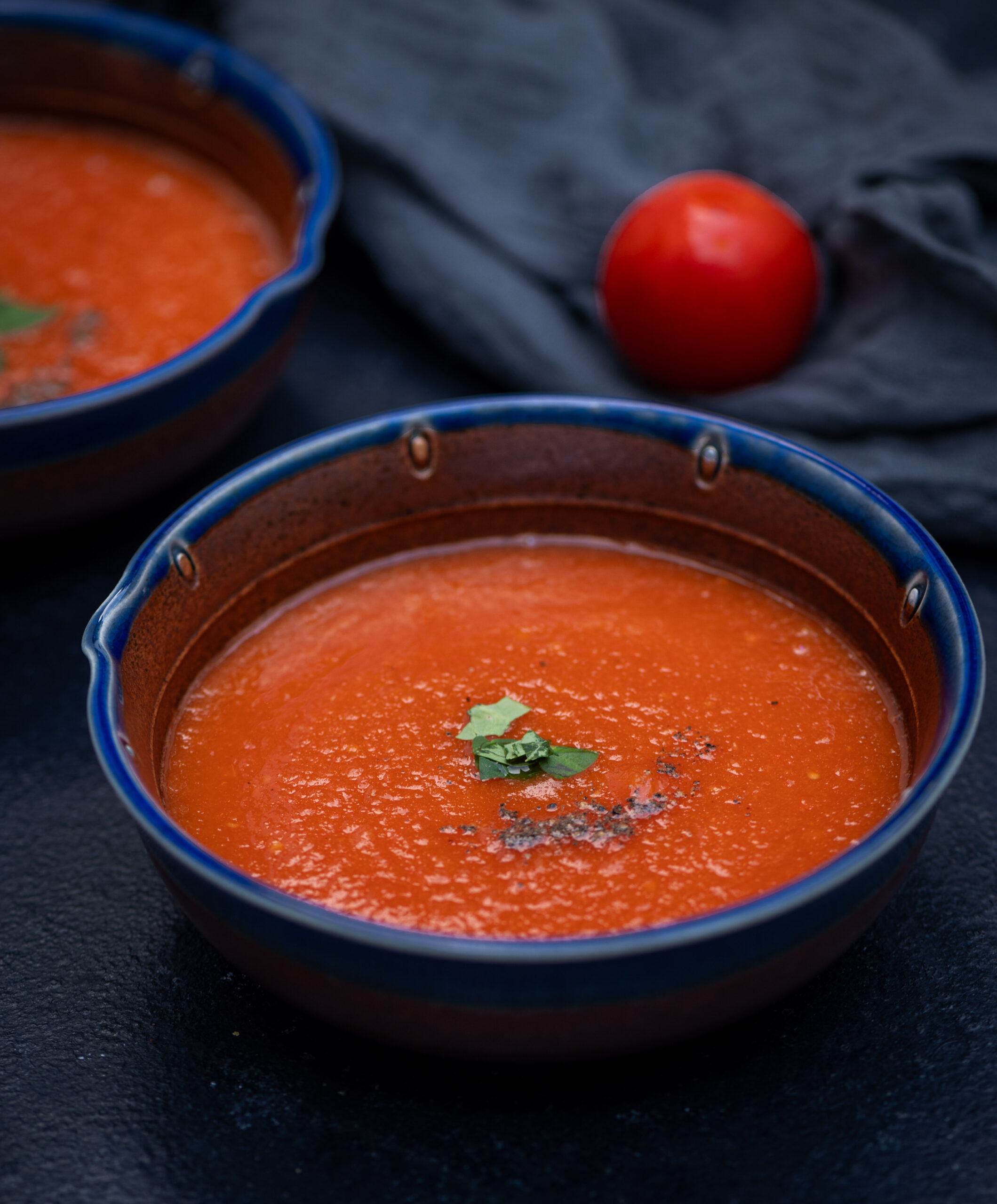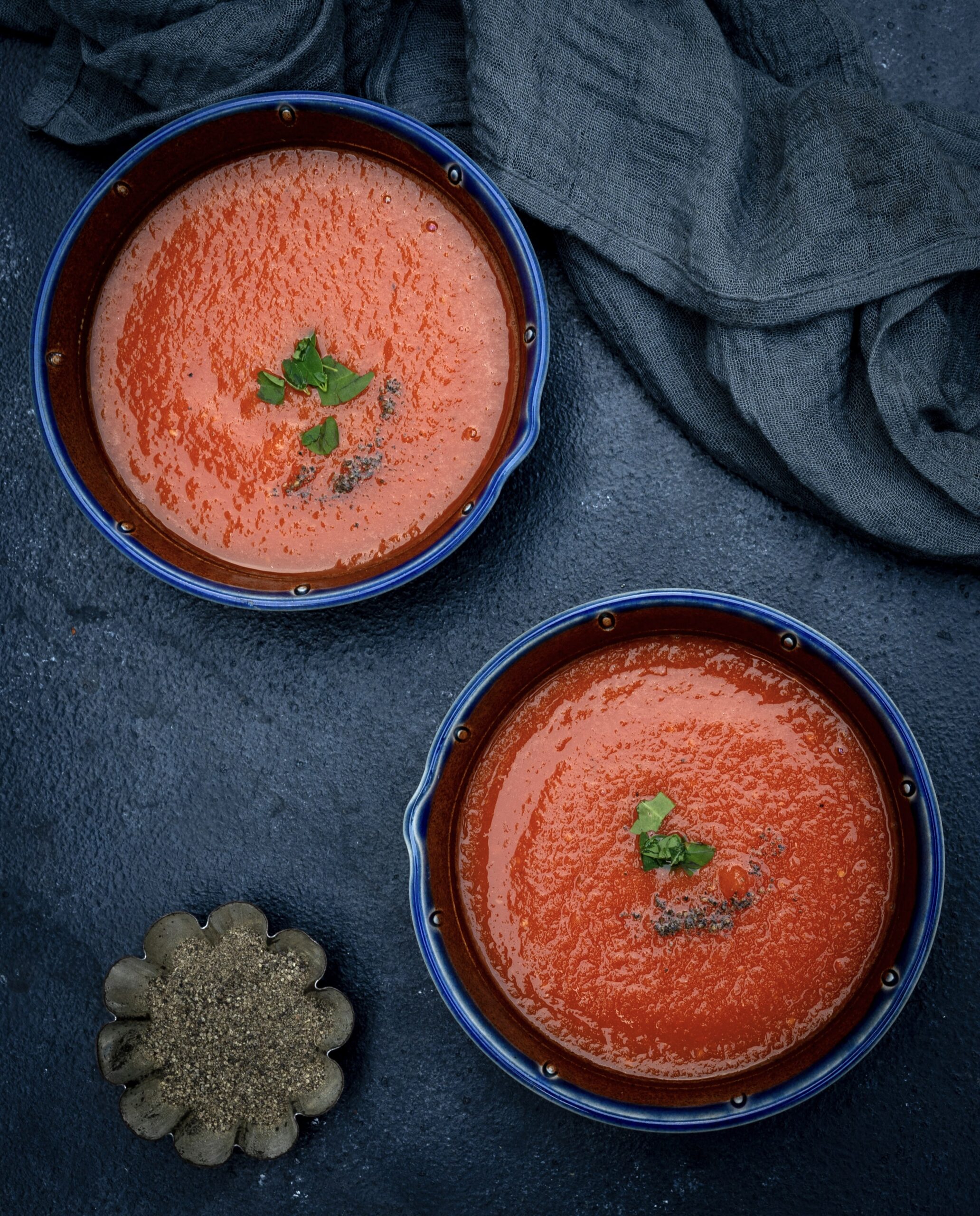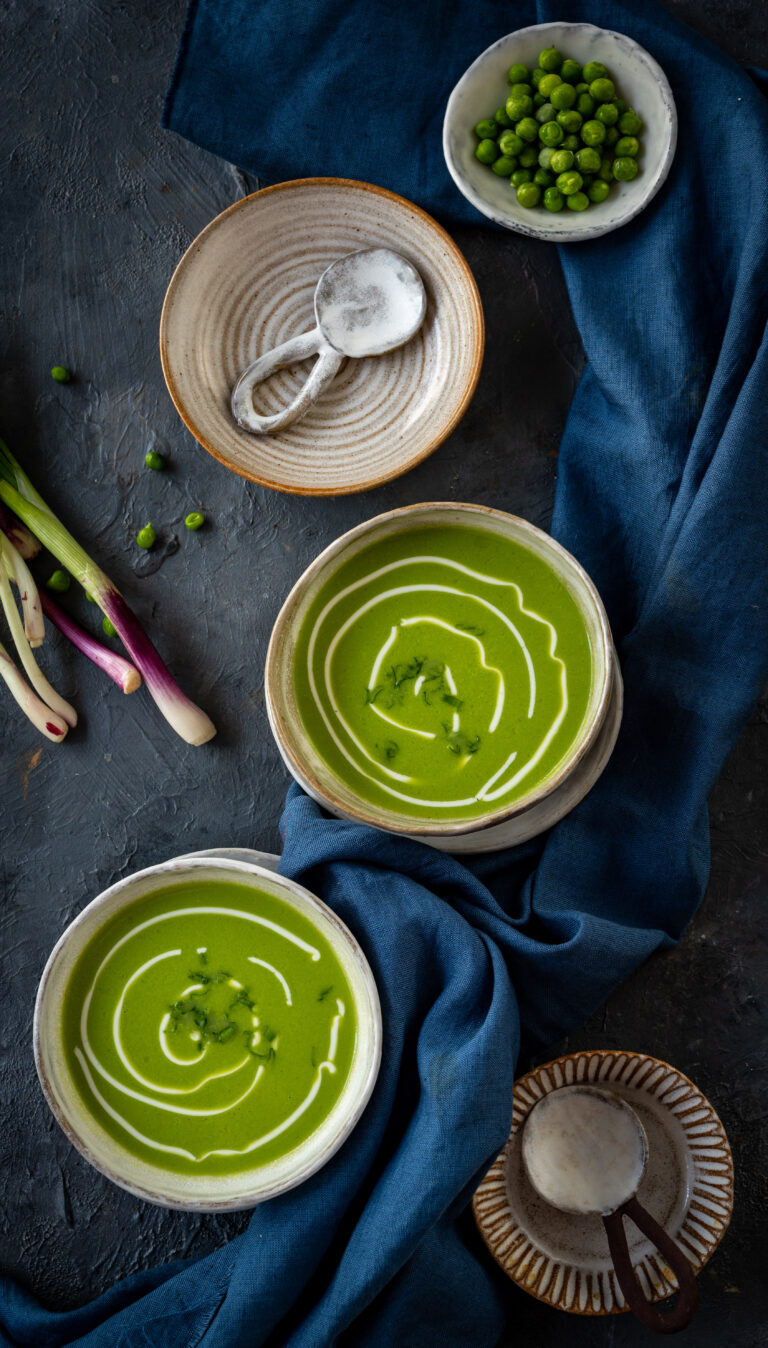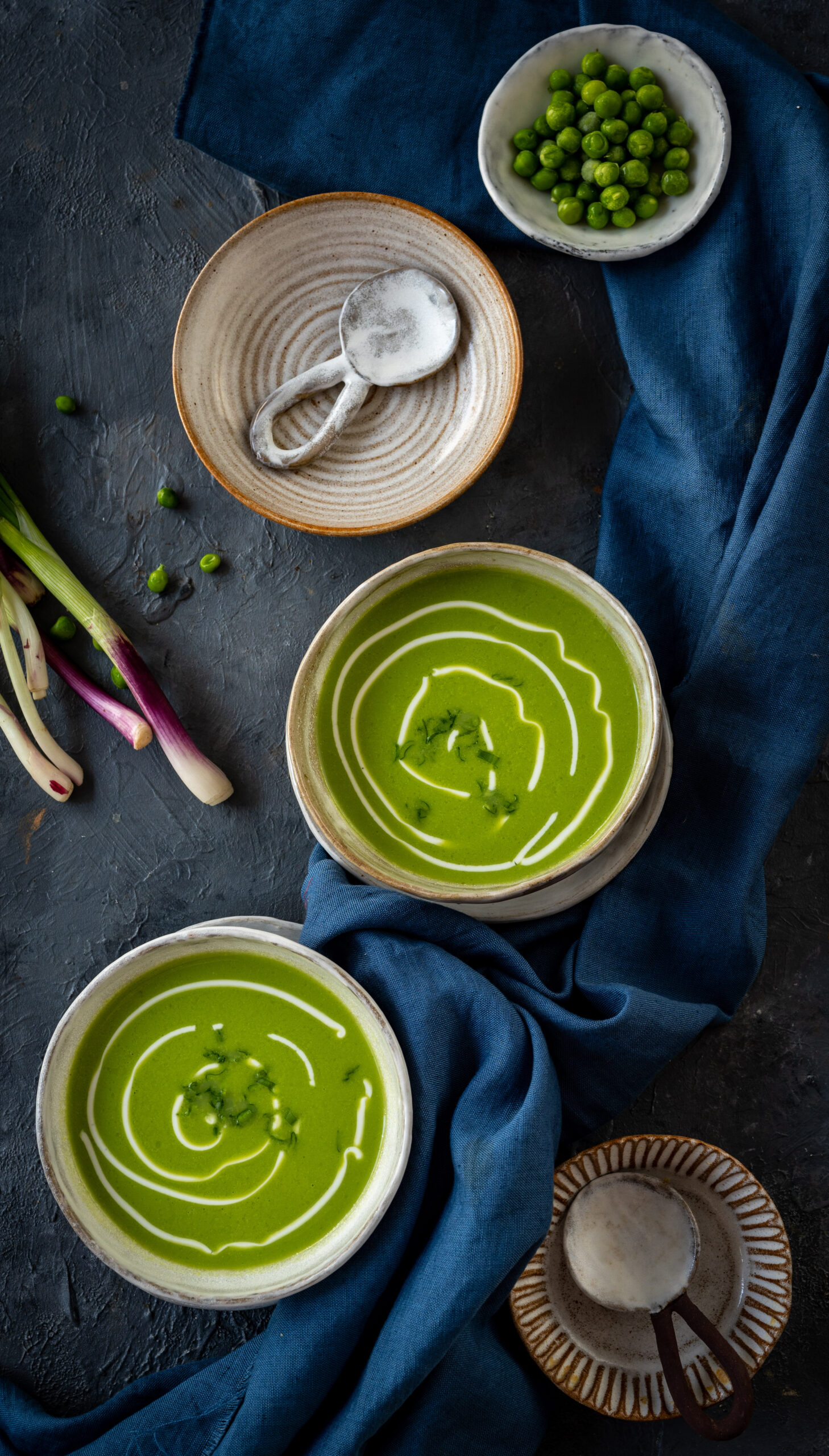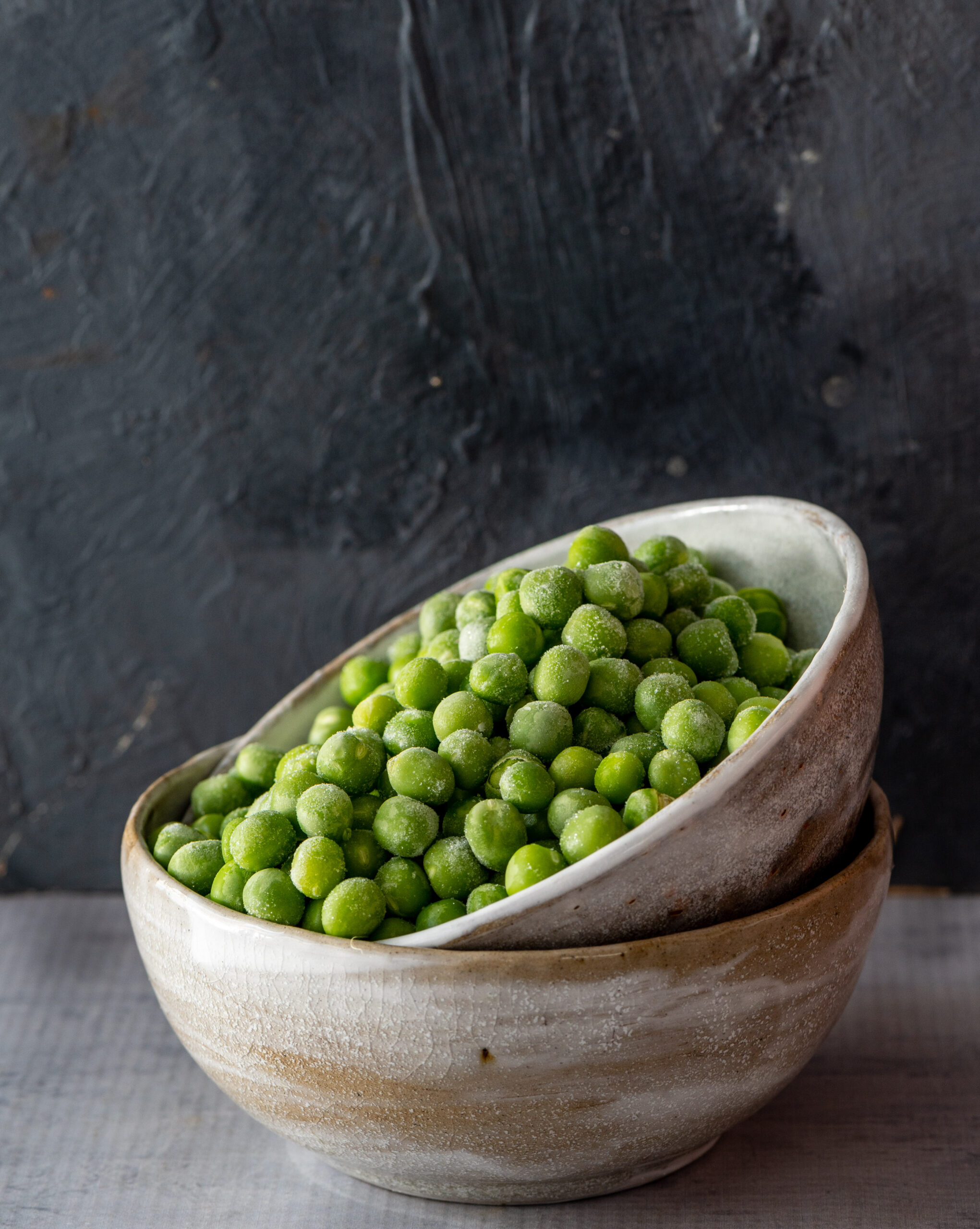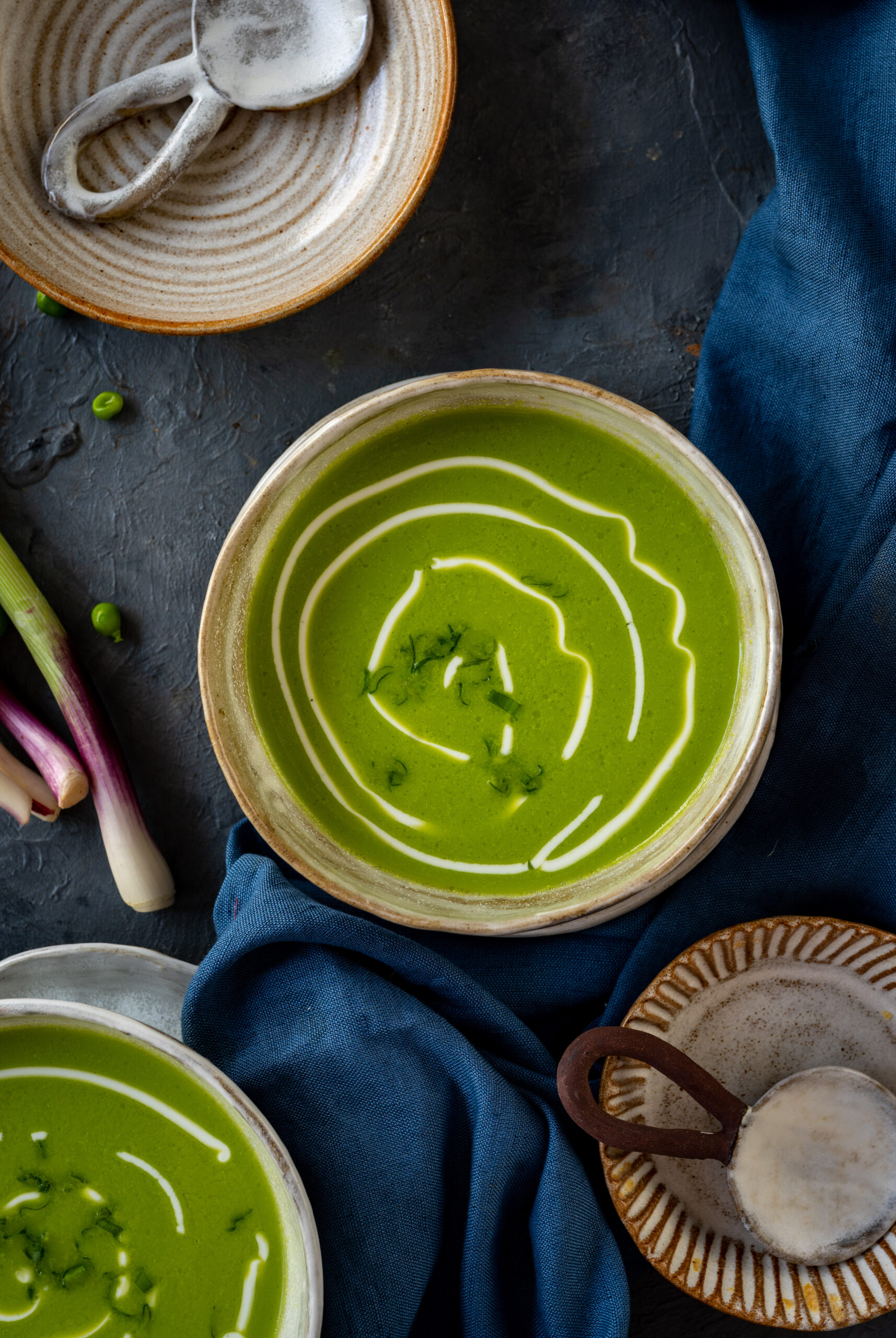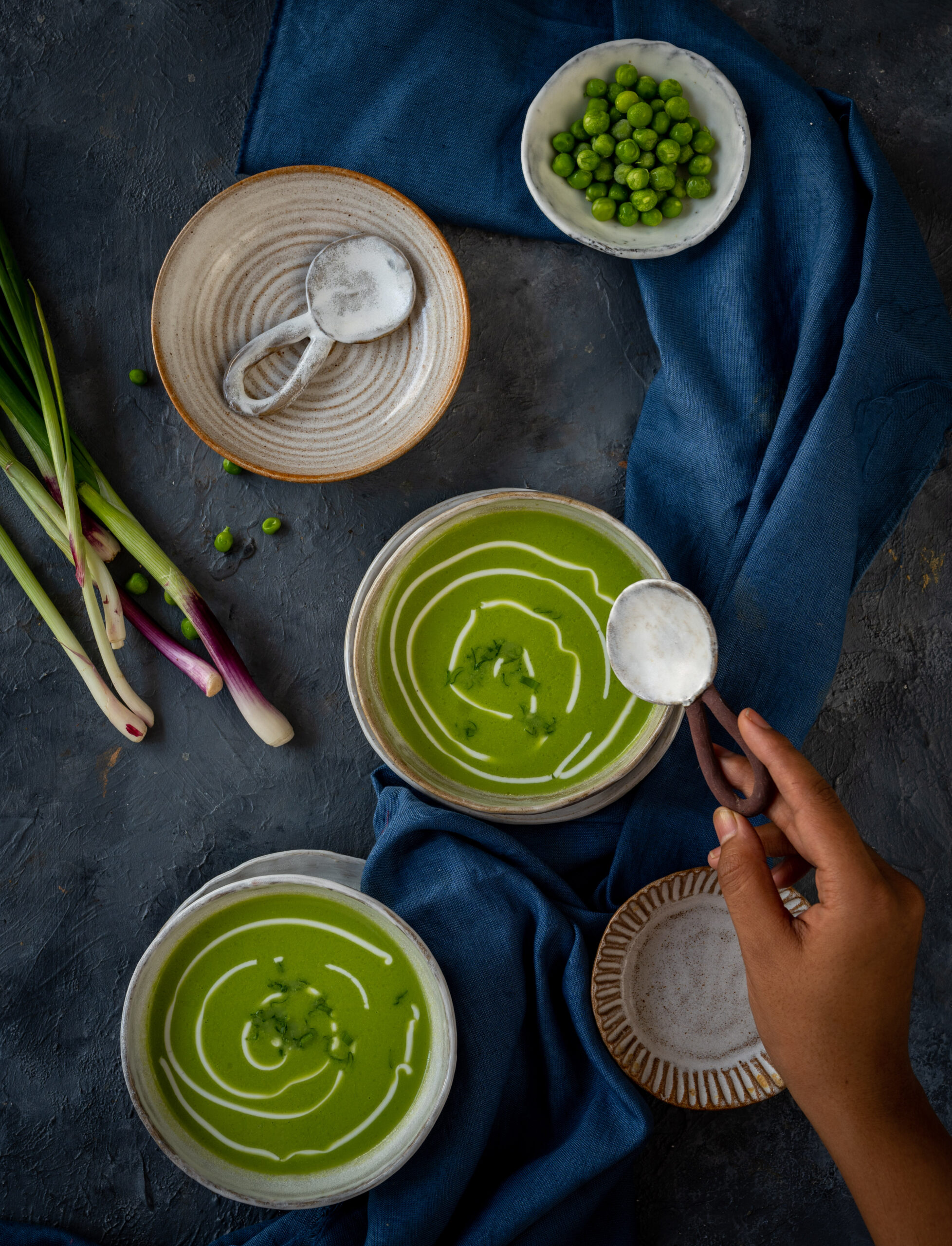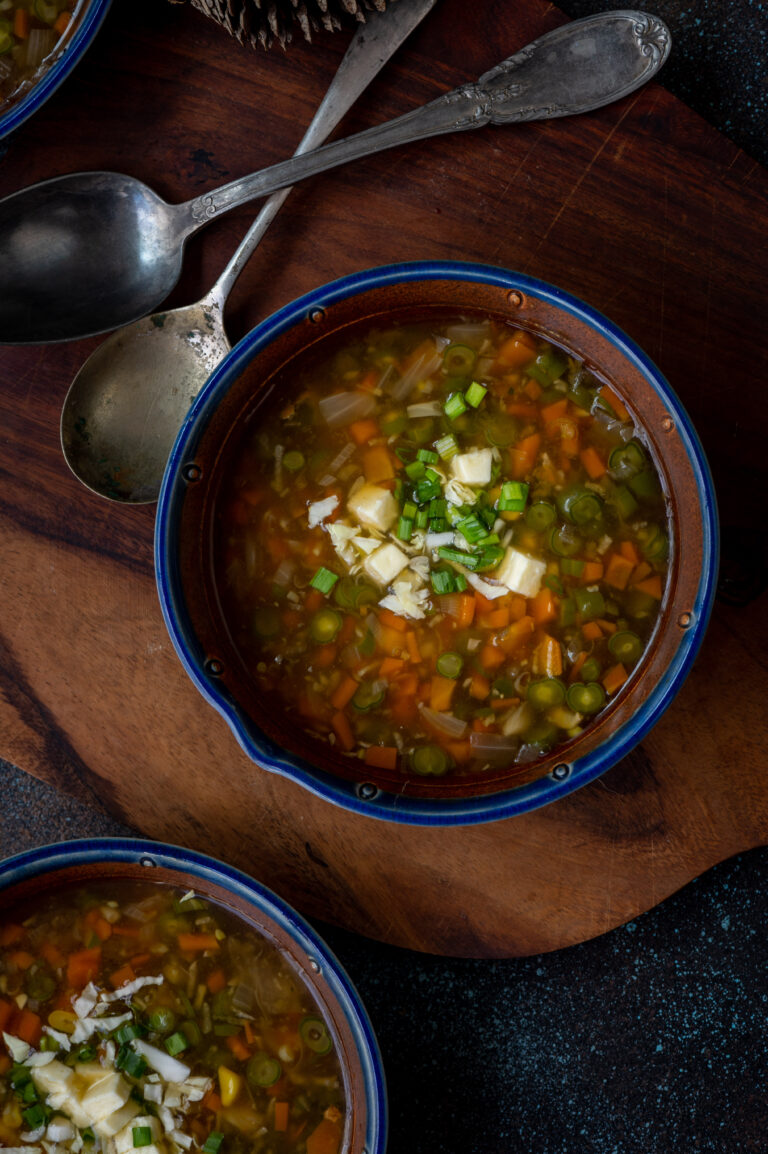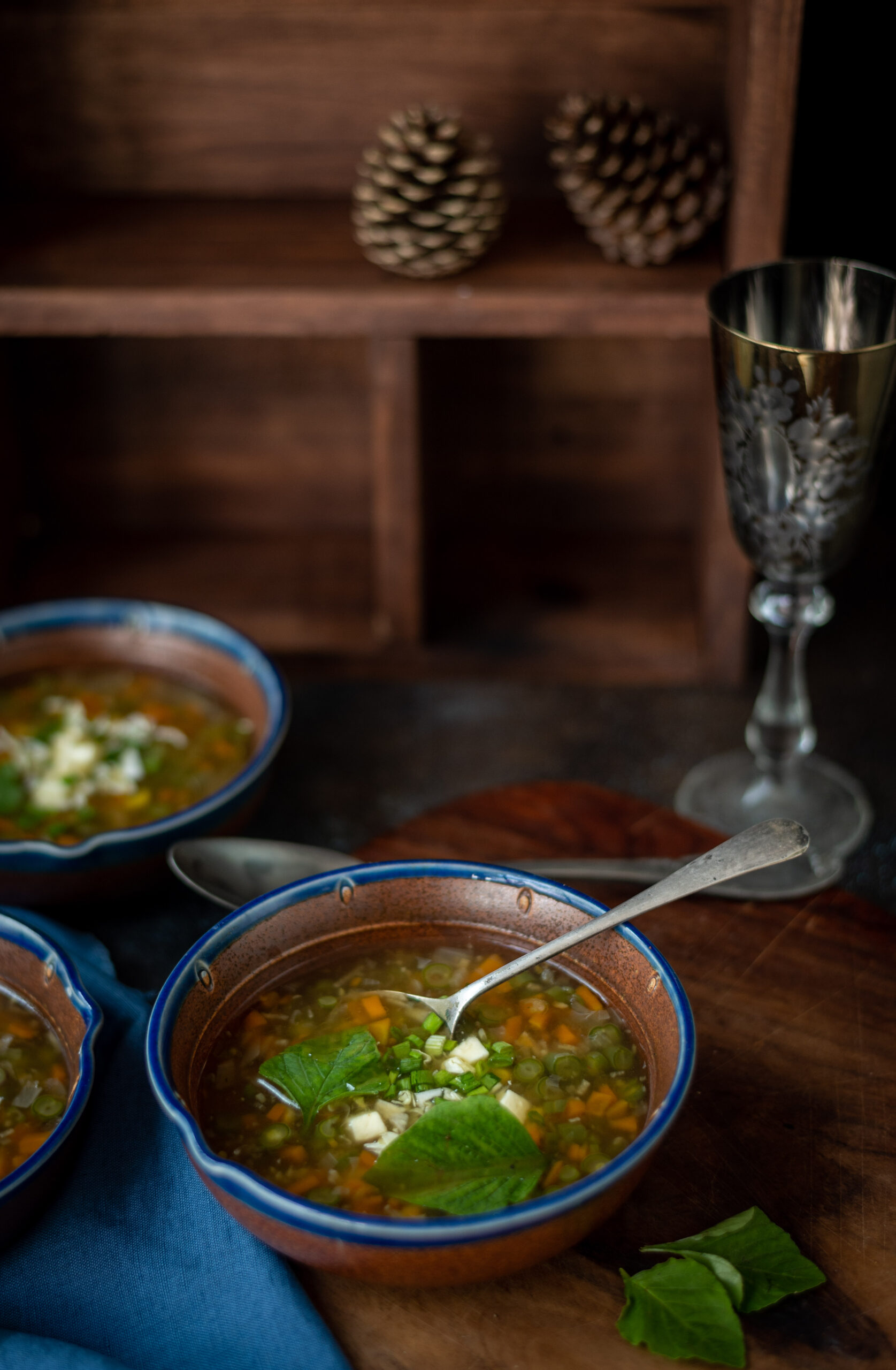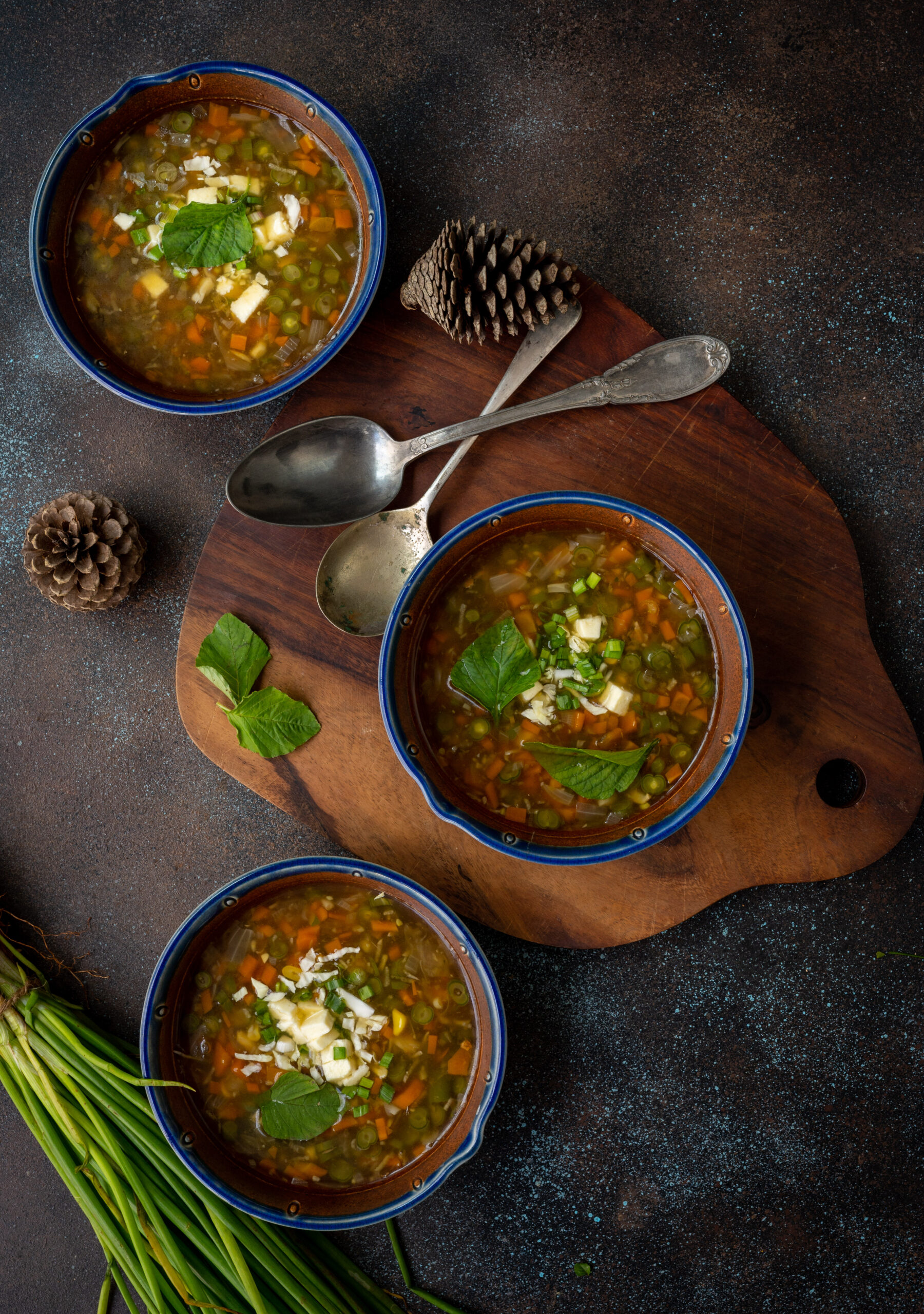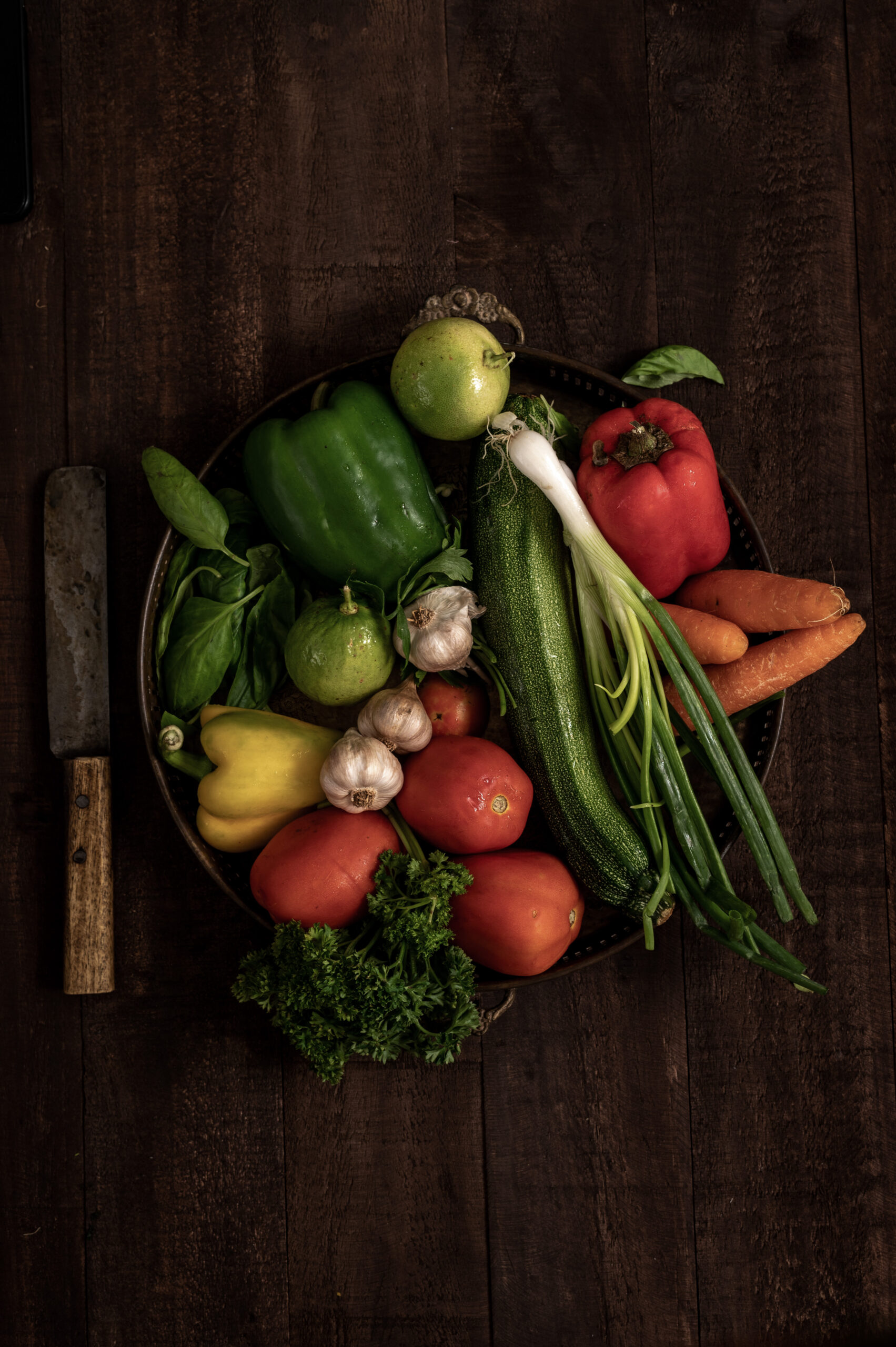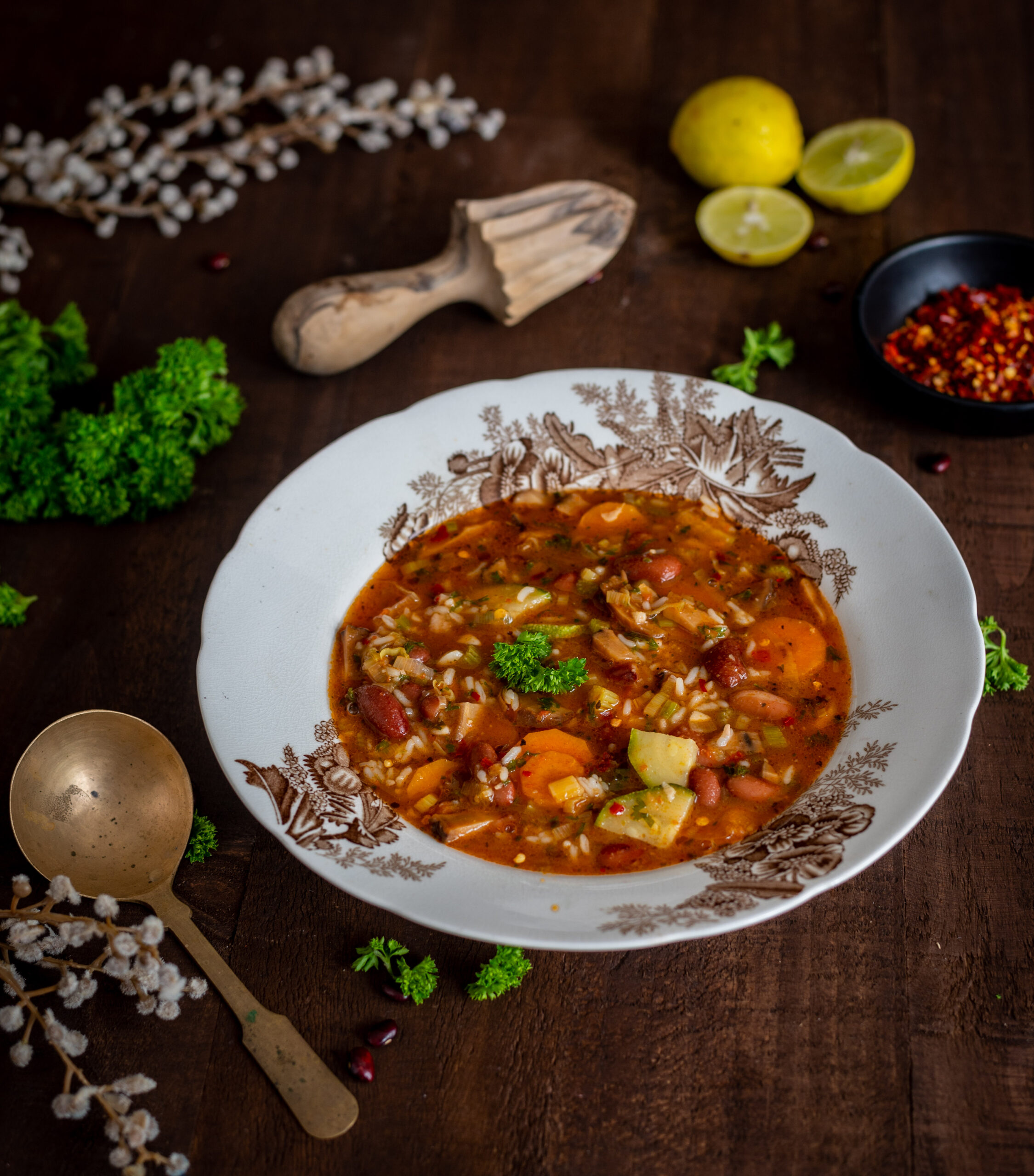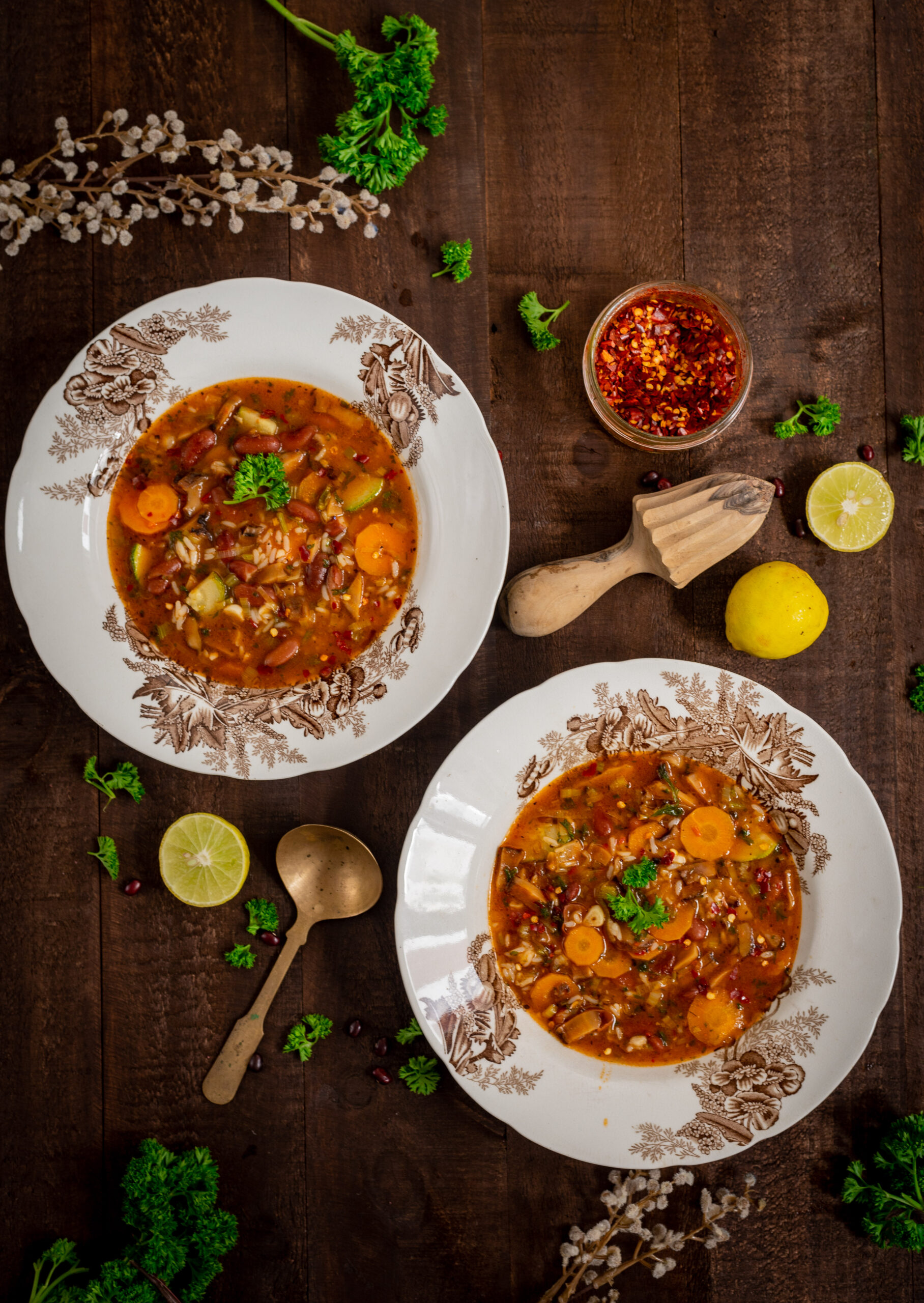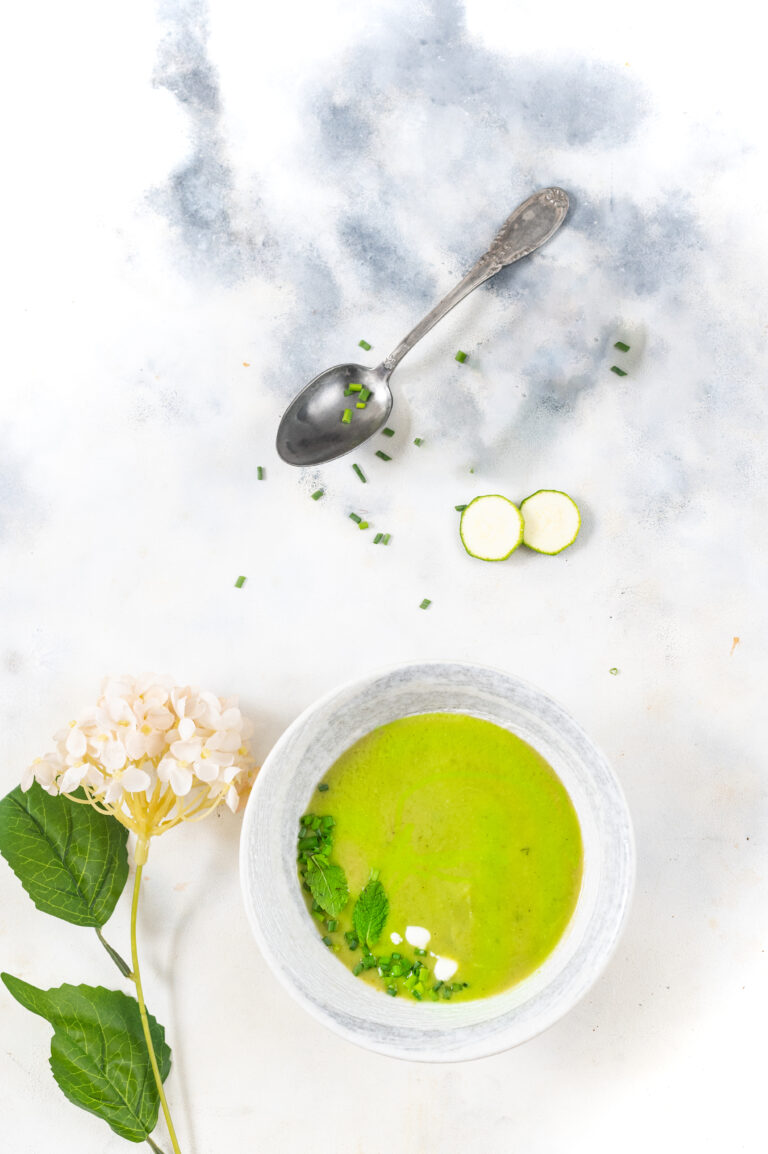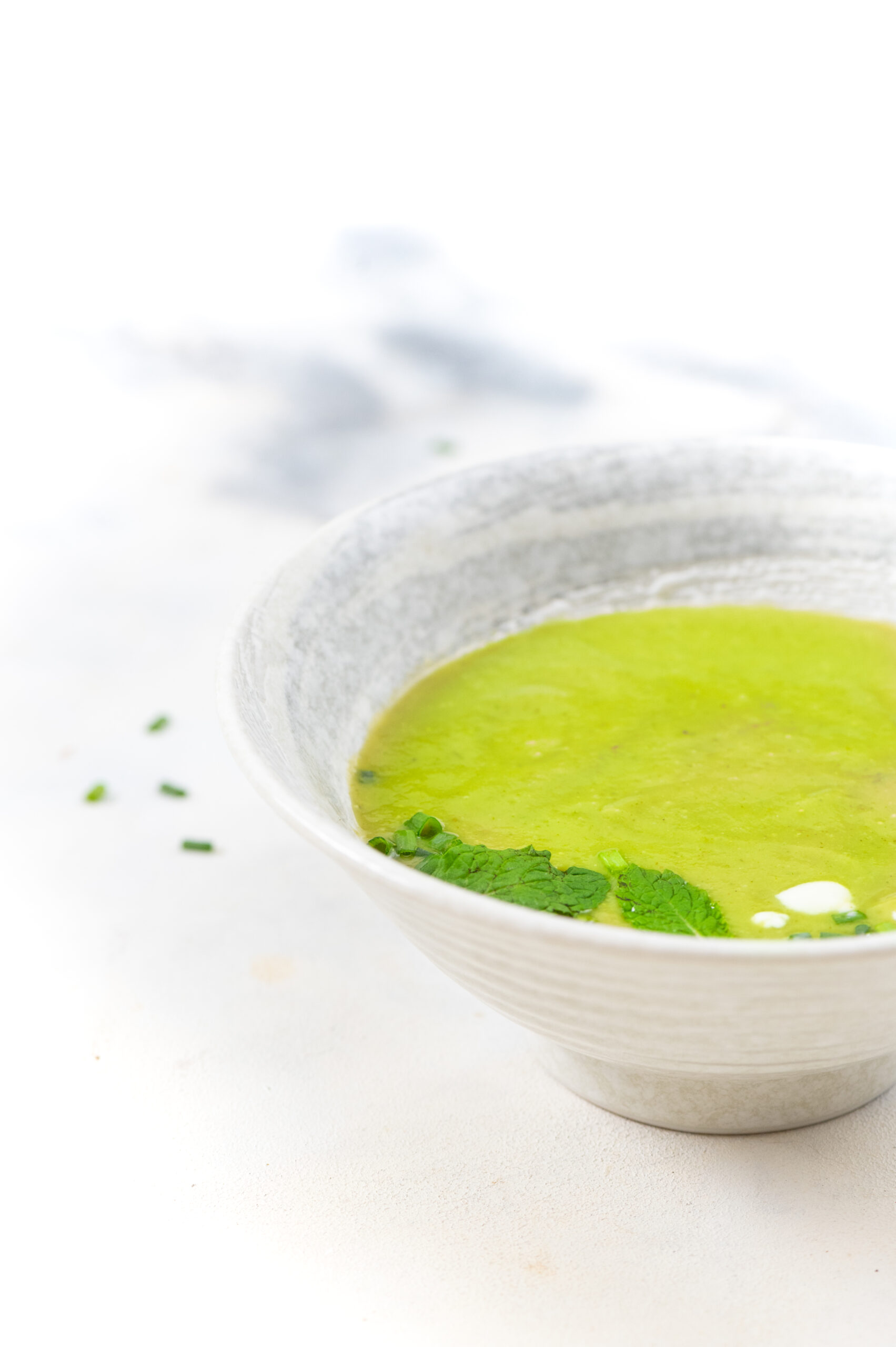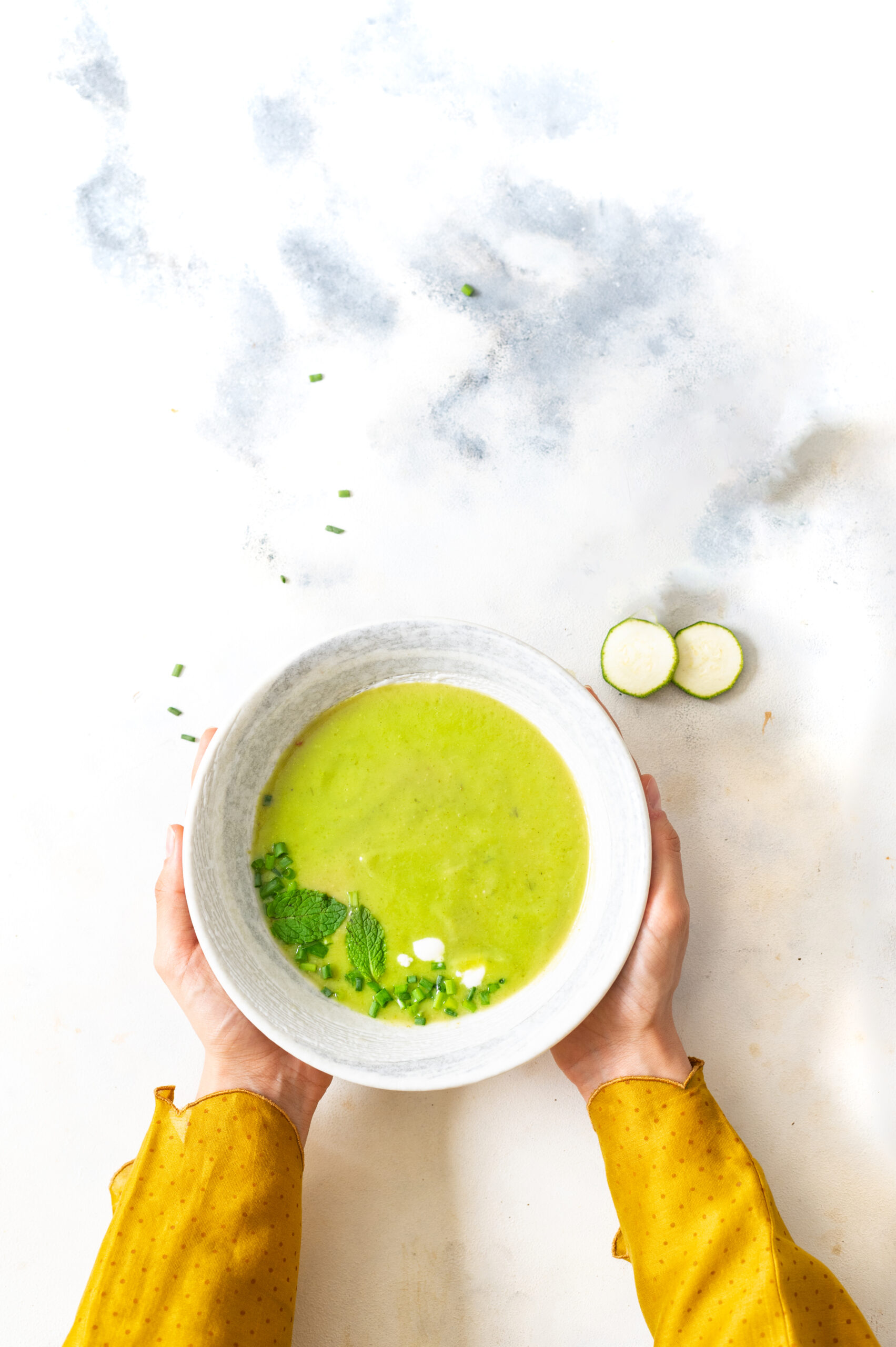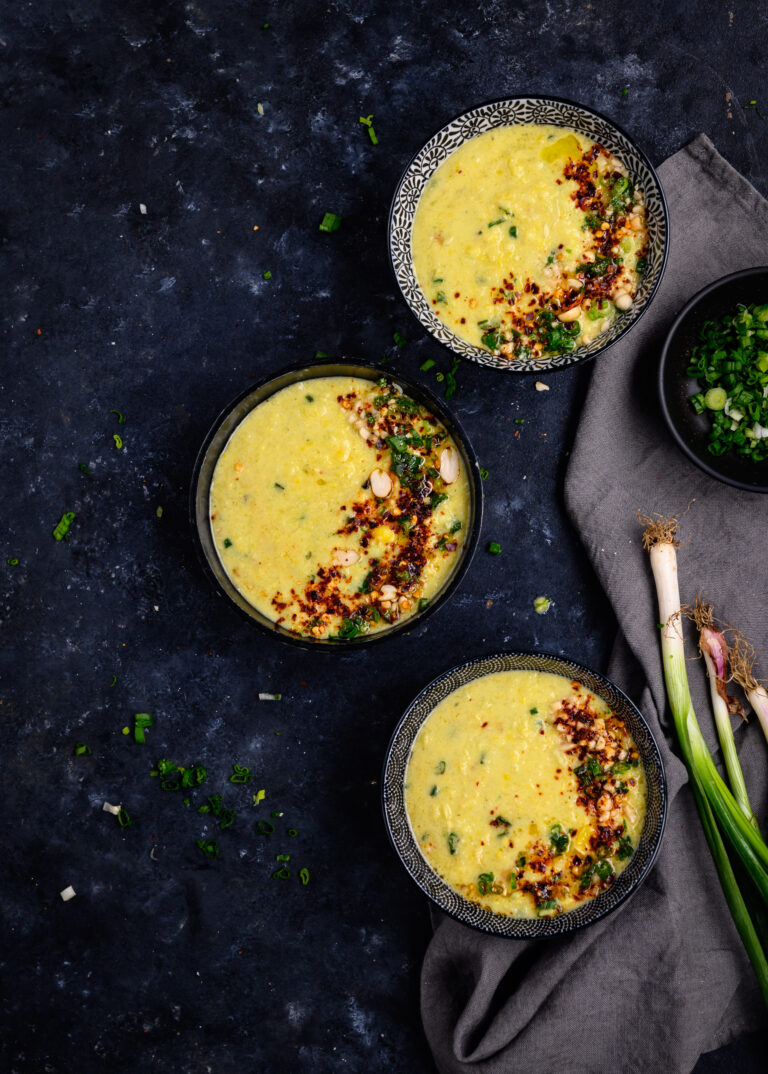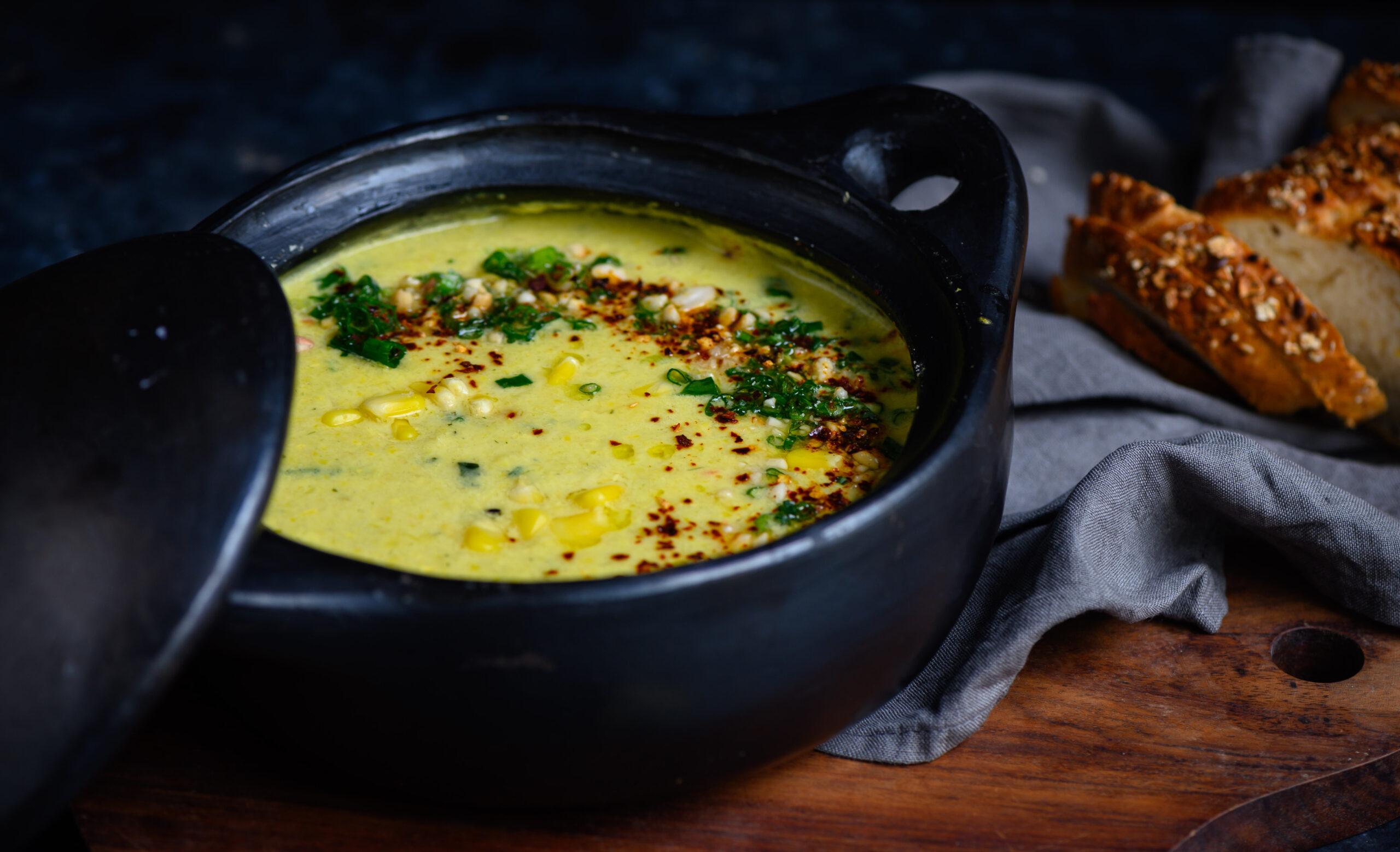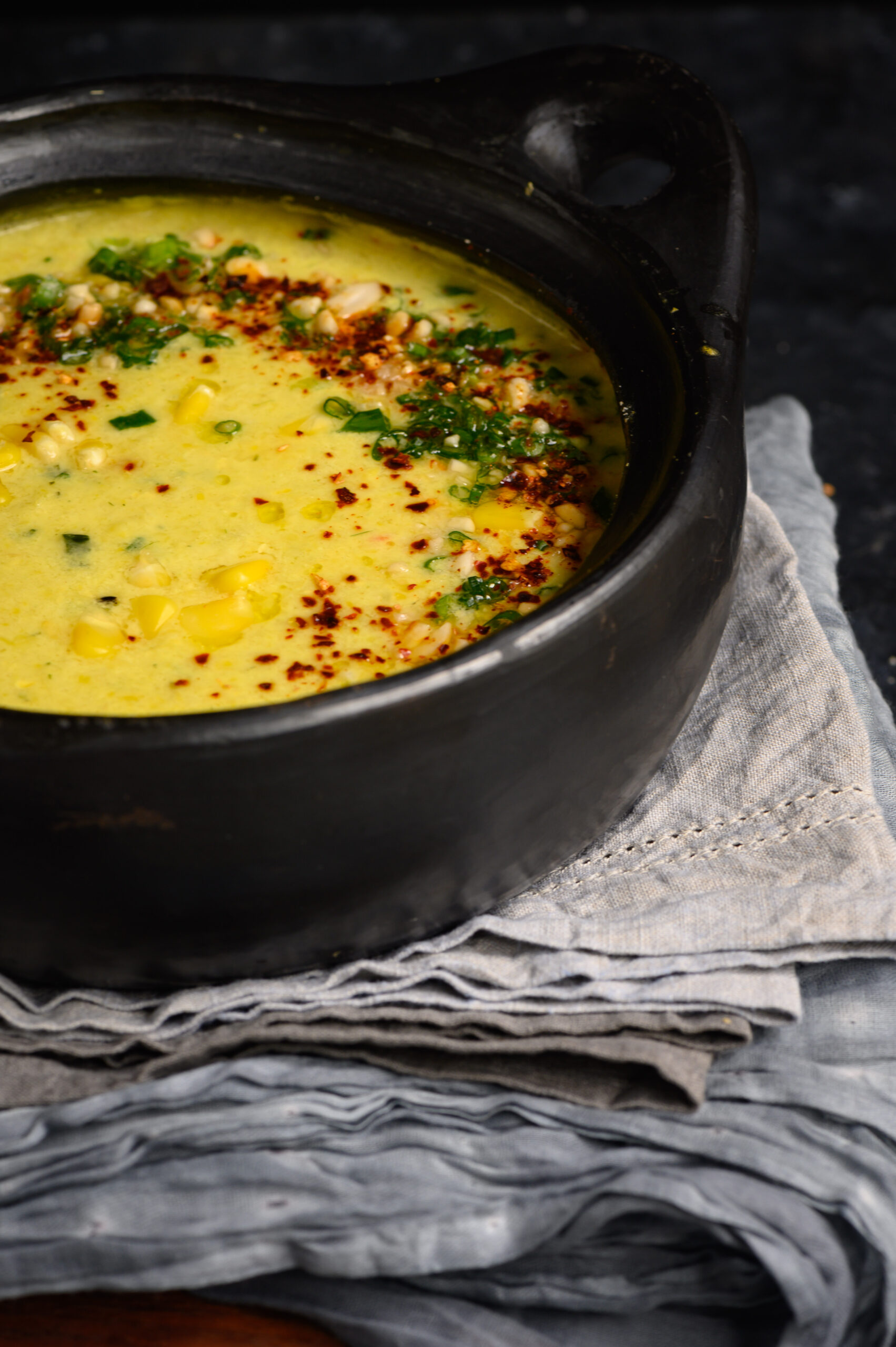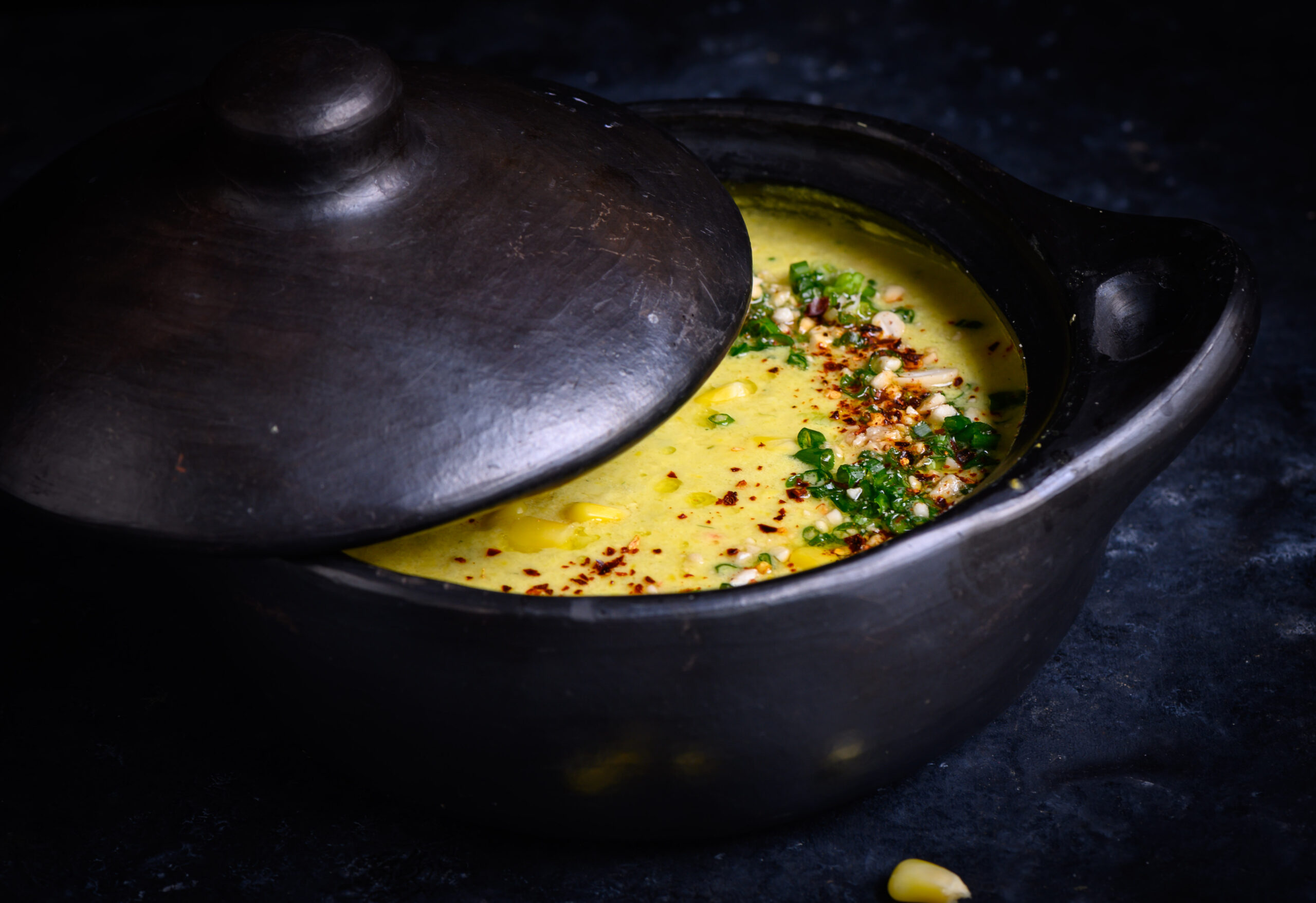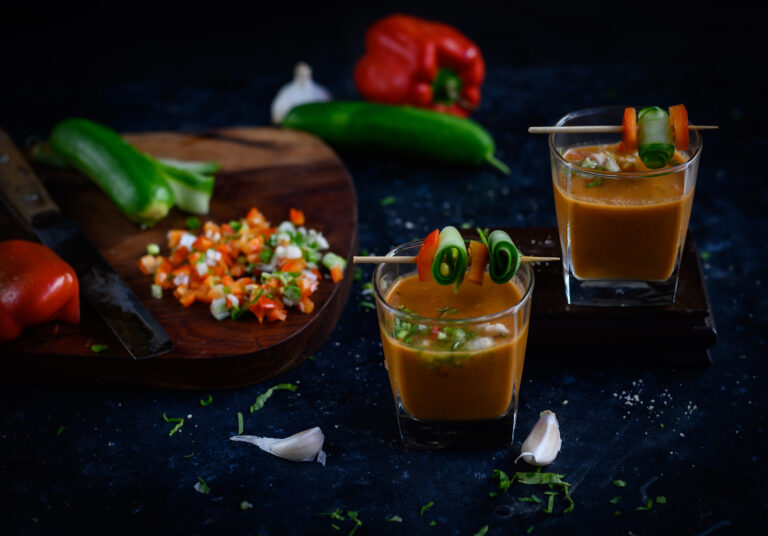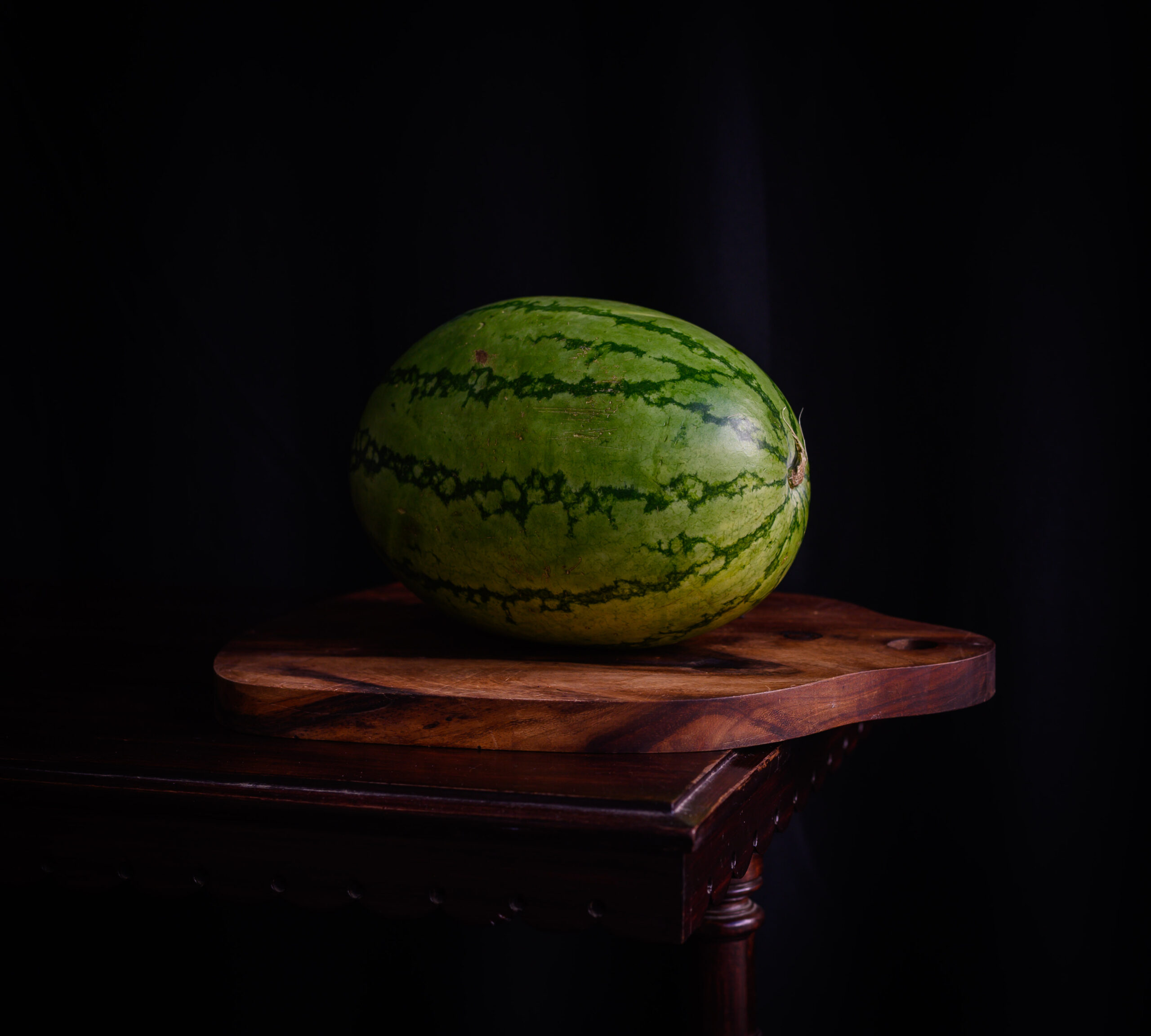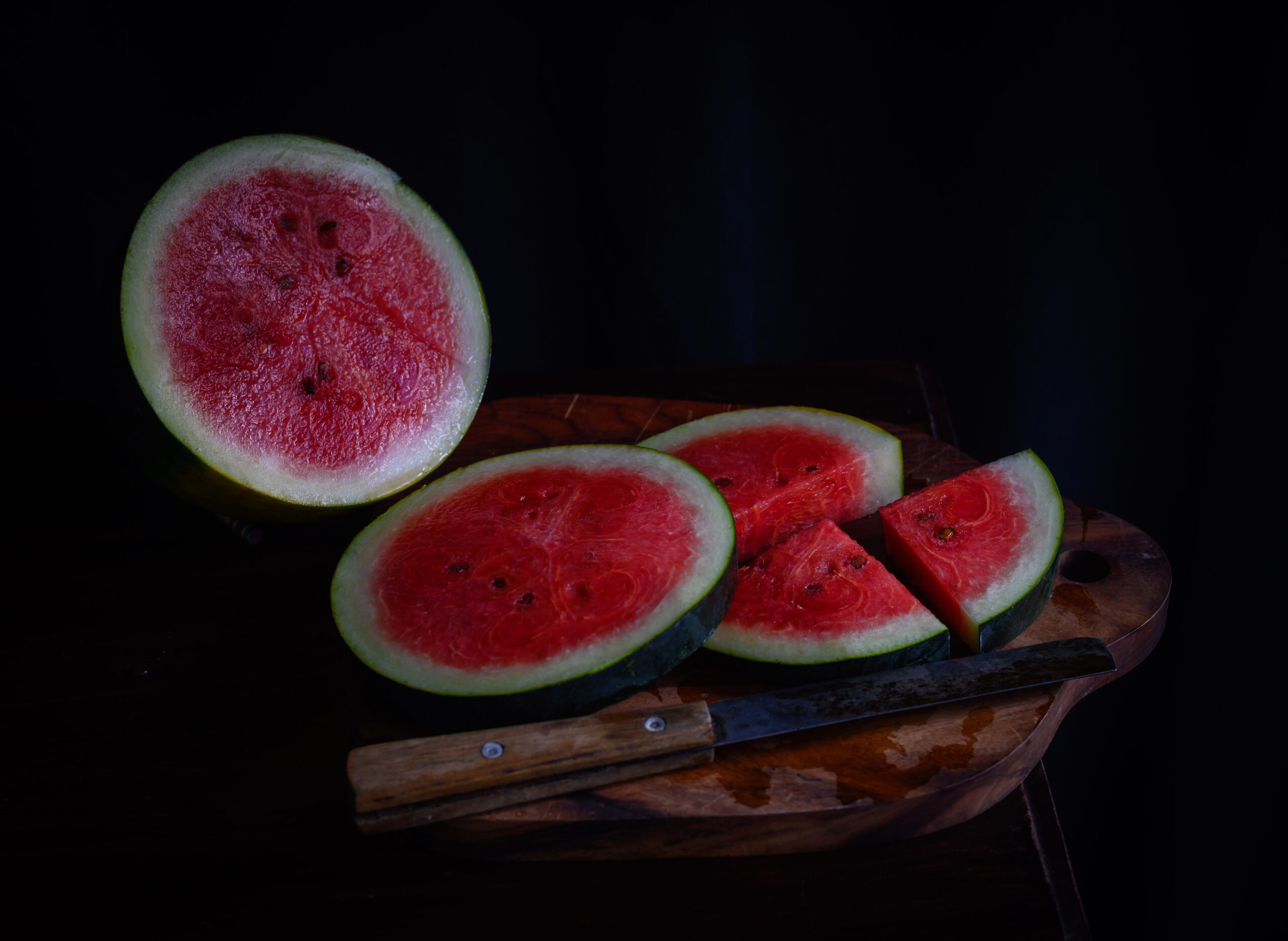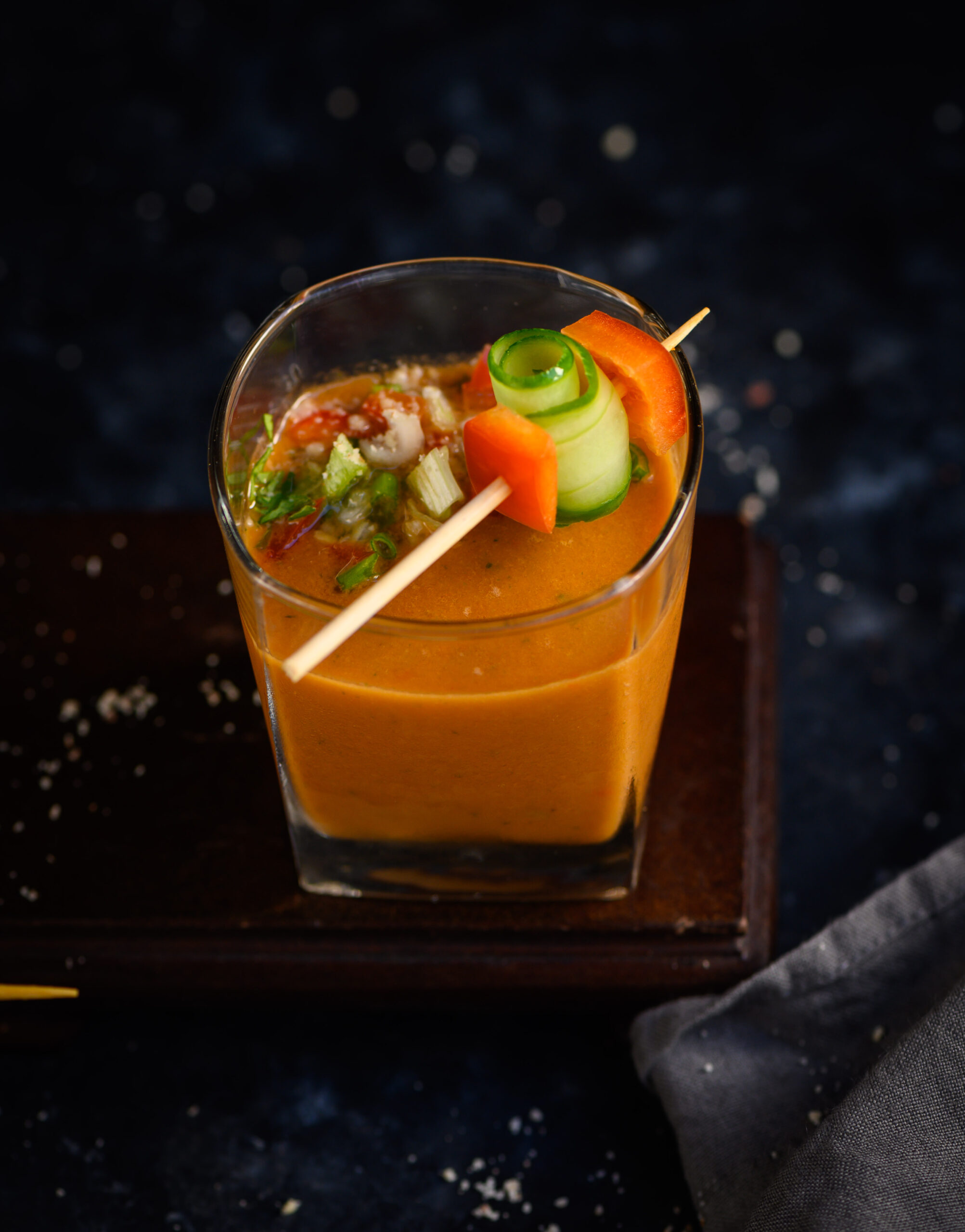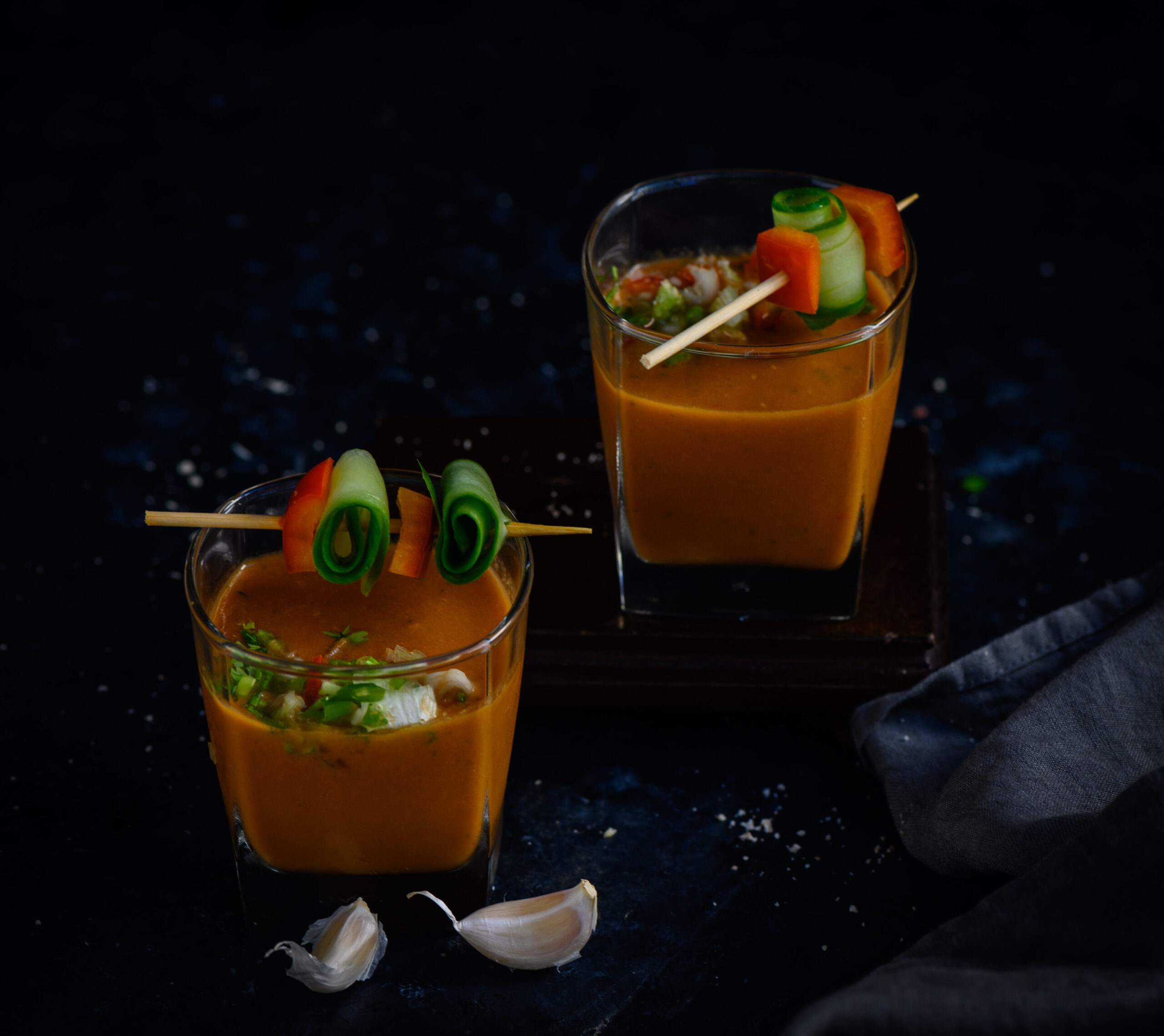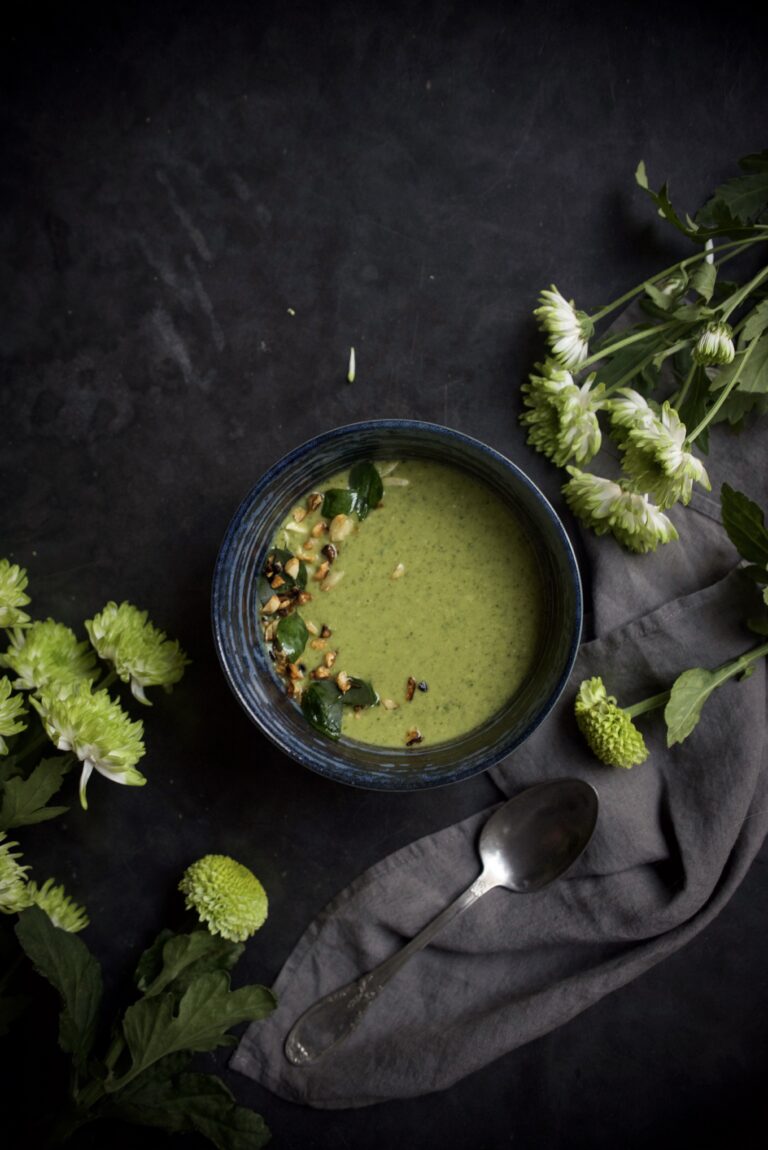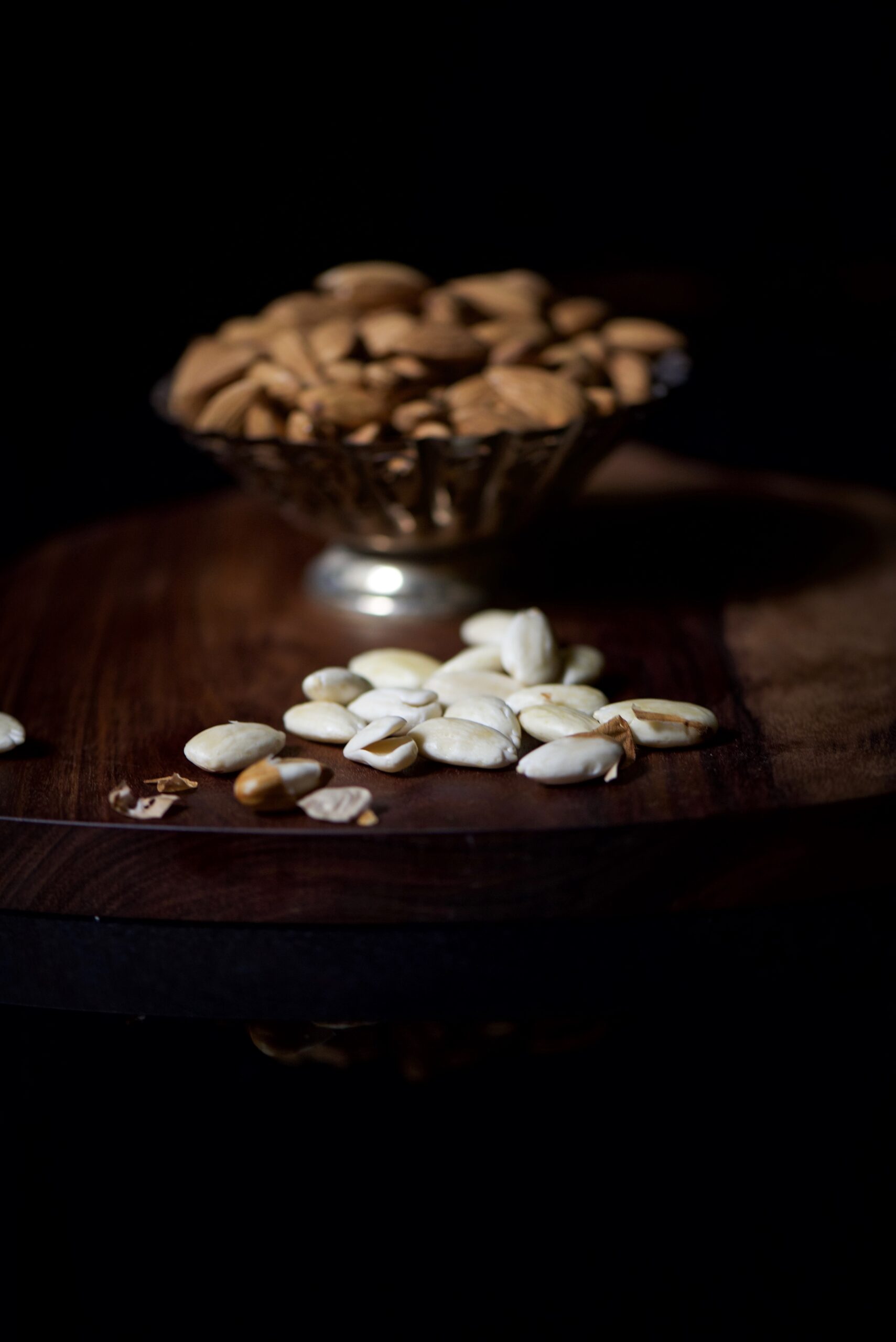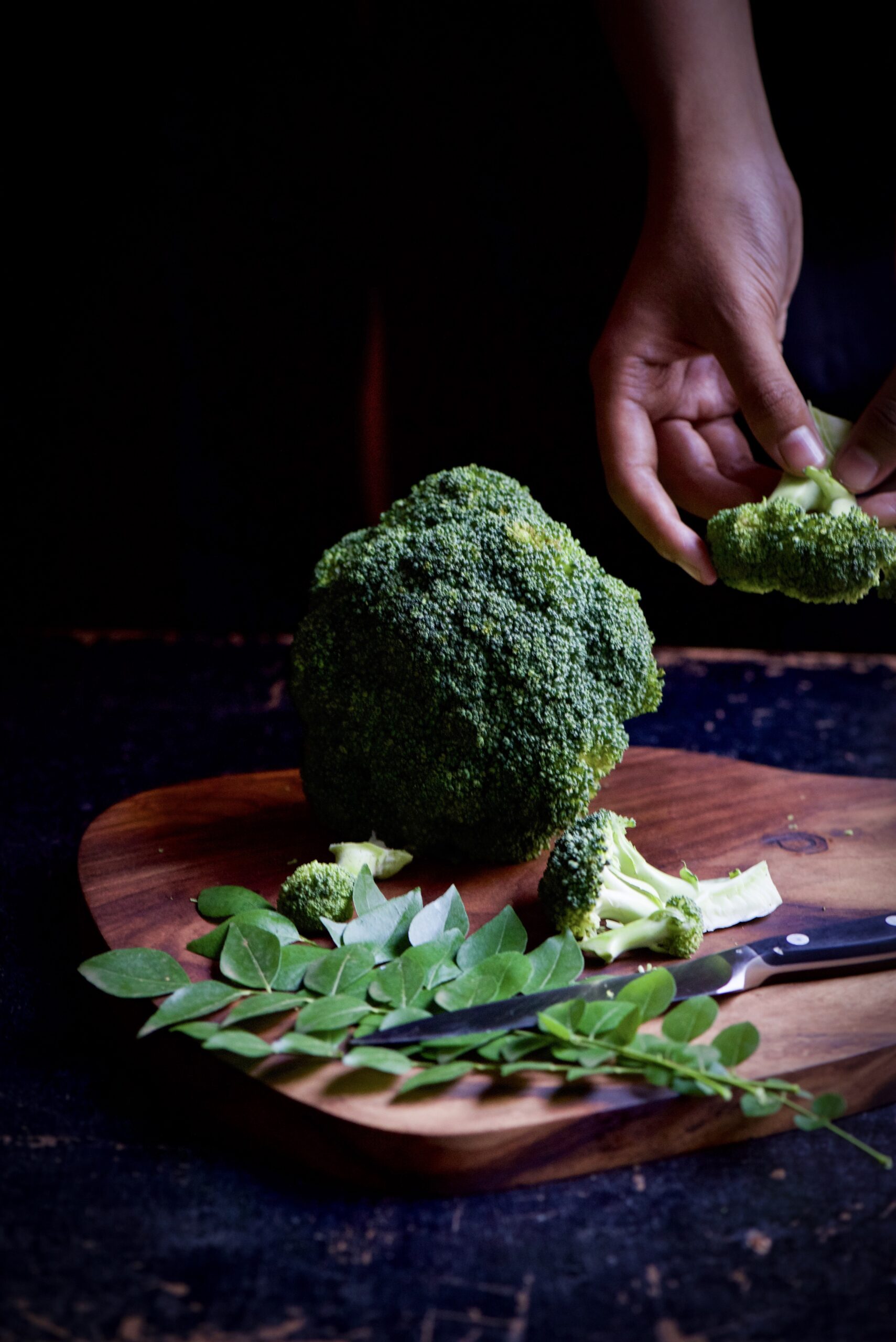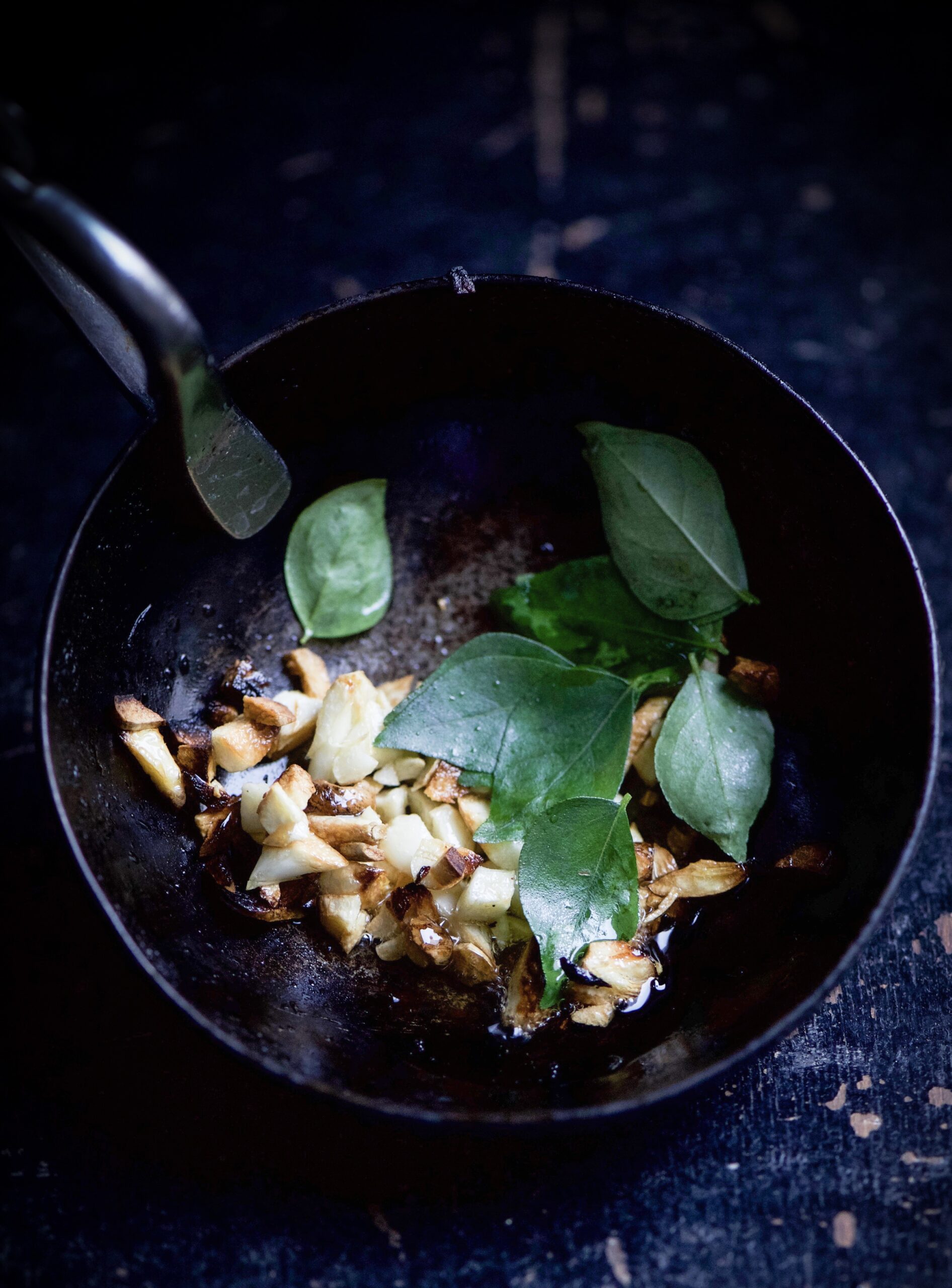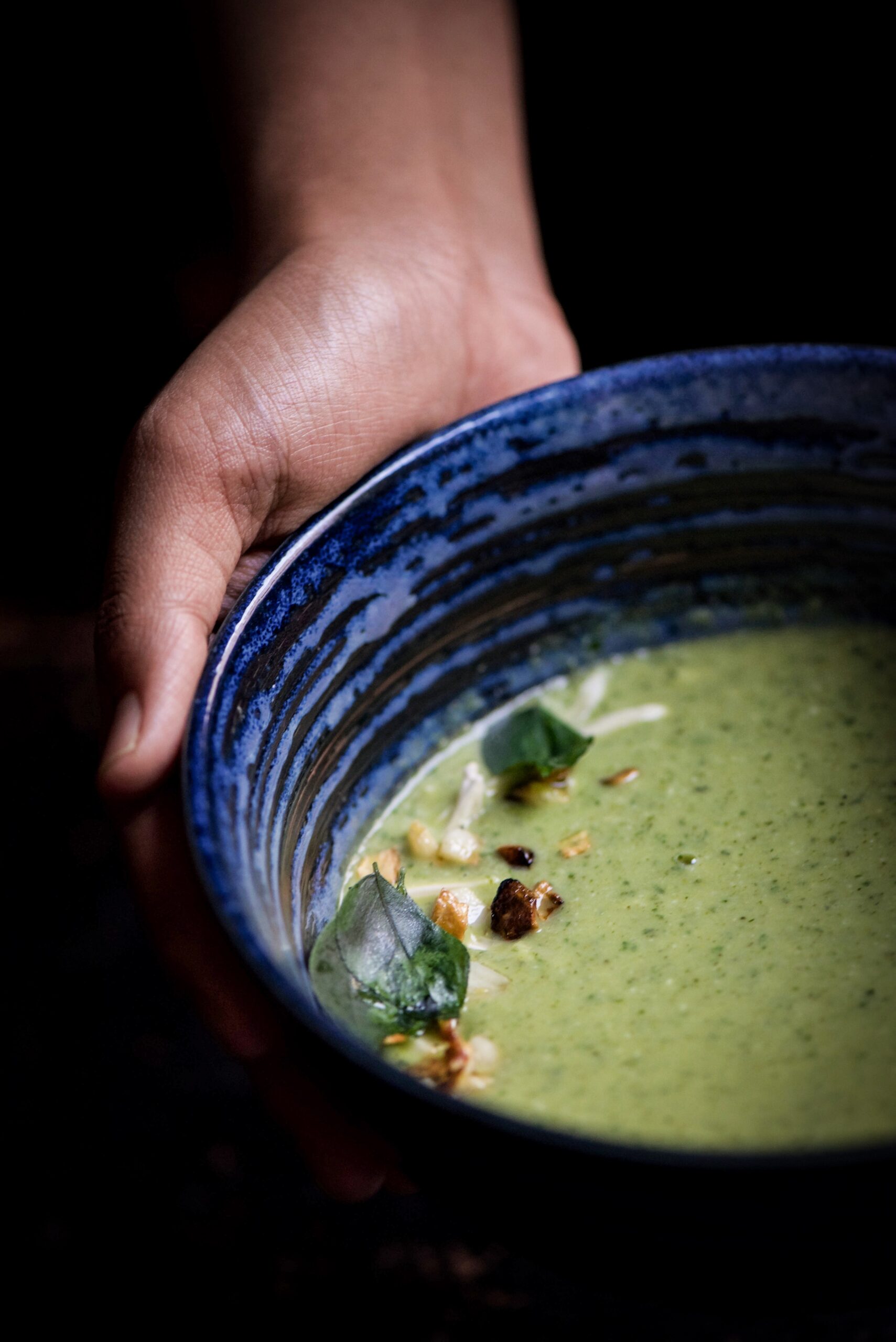For us here in India, this is the time of year when we get lovely, fresh vegetables and fruits throughout the country. Most of them have brief seasons – at most, a couple of months. When we have a period like this when the weather is gentle and the markets are full of just-harvested goodies, it’s a time to be appreciated. Even here in Chennai, it can feel a little chilly in the best way nowadays: the way that calls for soups and warm beverages and a feeling of coziness. Today I am sharing a soup that has its base sweet potato, which is available year-round, but which I feel is especially delicious come December.
This also happens to be that short window between Diwali and Christmas when one isn’t feasting with friends and family, and can therefore focus on more mindful and lighter eating. This spiced sweet potato soup ticks all the boxes. It is given its piquancy through garlic, ginger, pepper and shallots and has the sweetness of its core ingredient elevated through coconut. It is nourishing, filling and perfect to enjoy in this pleasant temperature. Ginger is a warming ingredient, which is just what is needed. It’s important to eat appropriately for the weather, and Nature tends to give us exactly the kind of produce we need for specific times and climes.
It really is such a pleasure to pick out ingredients for a soup, which is a dish that can contain just about anything. I’ve chosen very simple and accessible ingredients for this one, but you can play around and come up with a recipe or a style that suits your tastes. The sweet potato is baked before blending, so if you follow the method below, you could choose to replace it with carrot or pumpkin, or any other vegetable from their families.
Truly, and not just for this recipe but for any cooking you do at all, there is such a treasure trove of harvests to explore out there. I’ve been taking quite a lot of domestic flights lately, and I think many of us are flying within the country more than ever before, for work, for leisure, or to visit loved ones. Wherever I travel, I head to the markets and explore what is seasonal and local there. For instance, I just returned from Ahmedabad with bags full of lovely vegetables that we don’t get in Chennai, along with lots of fresh lentils and millets that are grown in Gujarat. It is similar wherever I go. I find it such a thrill to visit a bustling vegetable and fruit market, no matter where I am, and even if I don’t make any purchases (since not everything can be carted back), I will at least be photographing the produce. I admire them and enjoy the colours and scents and even learning about the crop through talking to people. I usually either come away with something I can cook with once I’m back home, or else with images that preserve the memory of that trip forever. I also sometimes return with my curiosity piqued. For example, I’ve been seeing water chestnuts lately but don’t really know how to use them except in a salad. I’m eager to find out how, and will share a recipe if I hit on something really good.
Speaking of memories, soups weren’t really a big part of my growing years, because they don’t suit the Chennai weather for most of the year. Now, of course, our palates have become more diverse and we have begun enjoying not only warm soups like this one, but even cold ones like gazpacho! It’s all about picking the right one based on time, place and occasion.
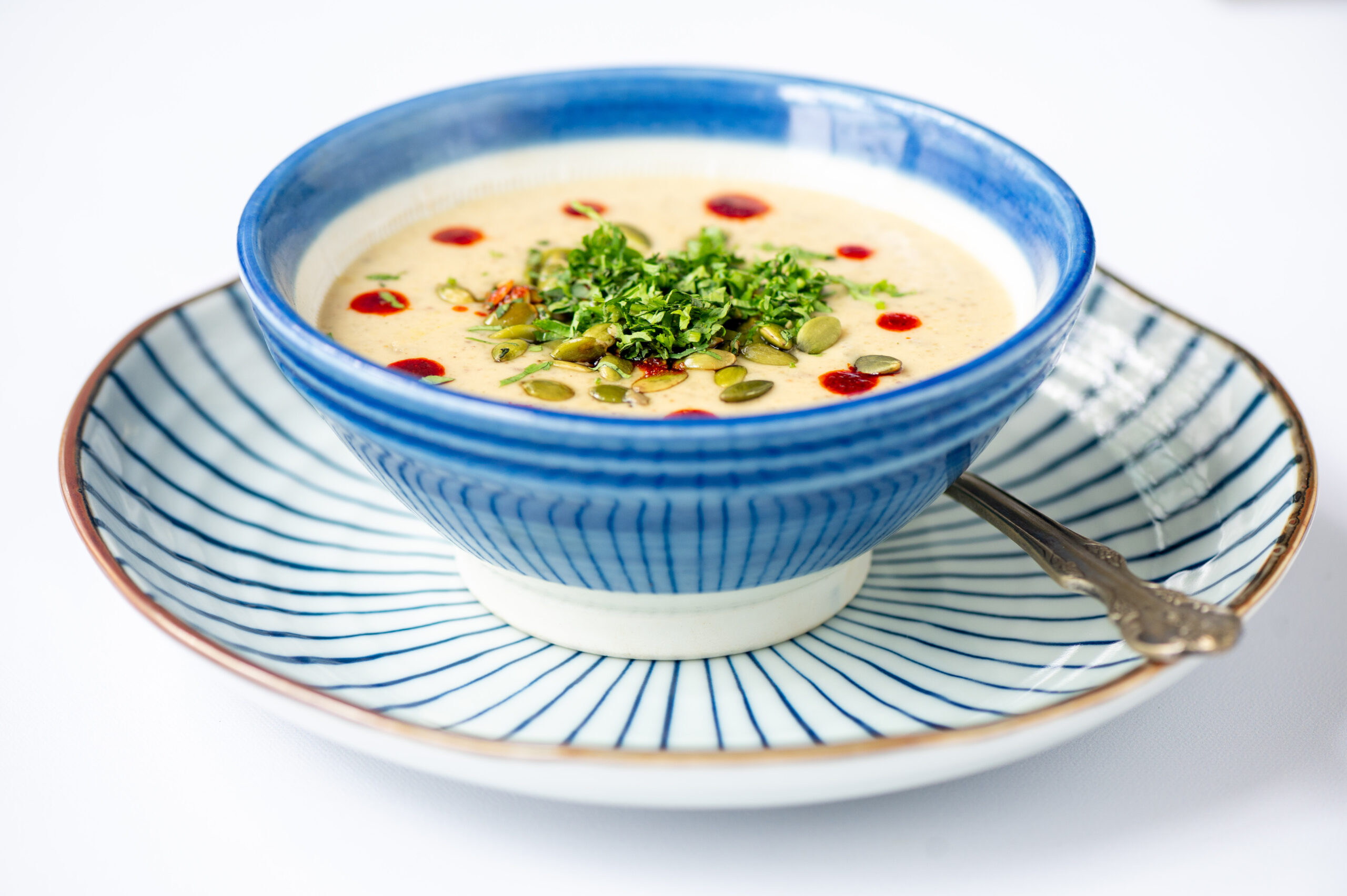
Sweet Potato & Ginger Soup
(Serves 2)
2 cups chopped sweet potato
6-8 garlic cloves
1 tablespoon minced ginger
5-6 shallots
2 tablespoons olive oil
Salt to taste
¼ teaspoon pepper powder
1 tin coconut milk
1-2 cups vegetable broth
Preheat the oven to 200°C. Place the sweet potato, shallots, ginger and garlic cloves on a baking tray. Sprinkle with salt and drizzle olive oil. Mix using your fingers.
Bake in the oven for 30-40 minutes or until the vegetables are tender and slightly charred.
Remove the tray from the oven and once the sweet potato, shallots and garlic have cooled a little, blend them in a mixer jar along with the coconut milk and 1 cup of vegetable broth. Use more if making a larger quantity.
Remove from the jar. Taste and adjust the salt and pepper if required.
Top it off with a squeeze of lime if you would like to add more tang. Garnish the soup to your preference (I used coriander leaves and roasted pumpkin seeds). Your spiced sweet potato is ready to serve, and just right for the season! You can explore more of my soup recipes here.
